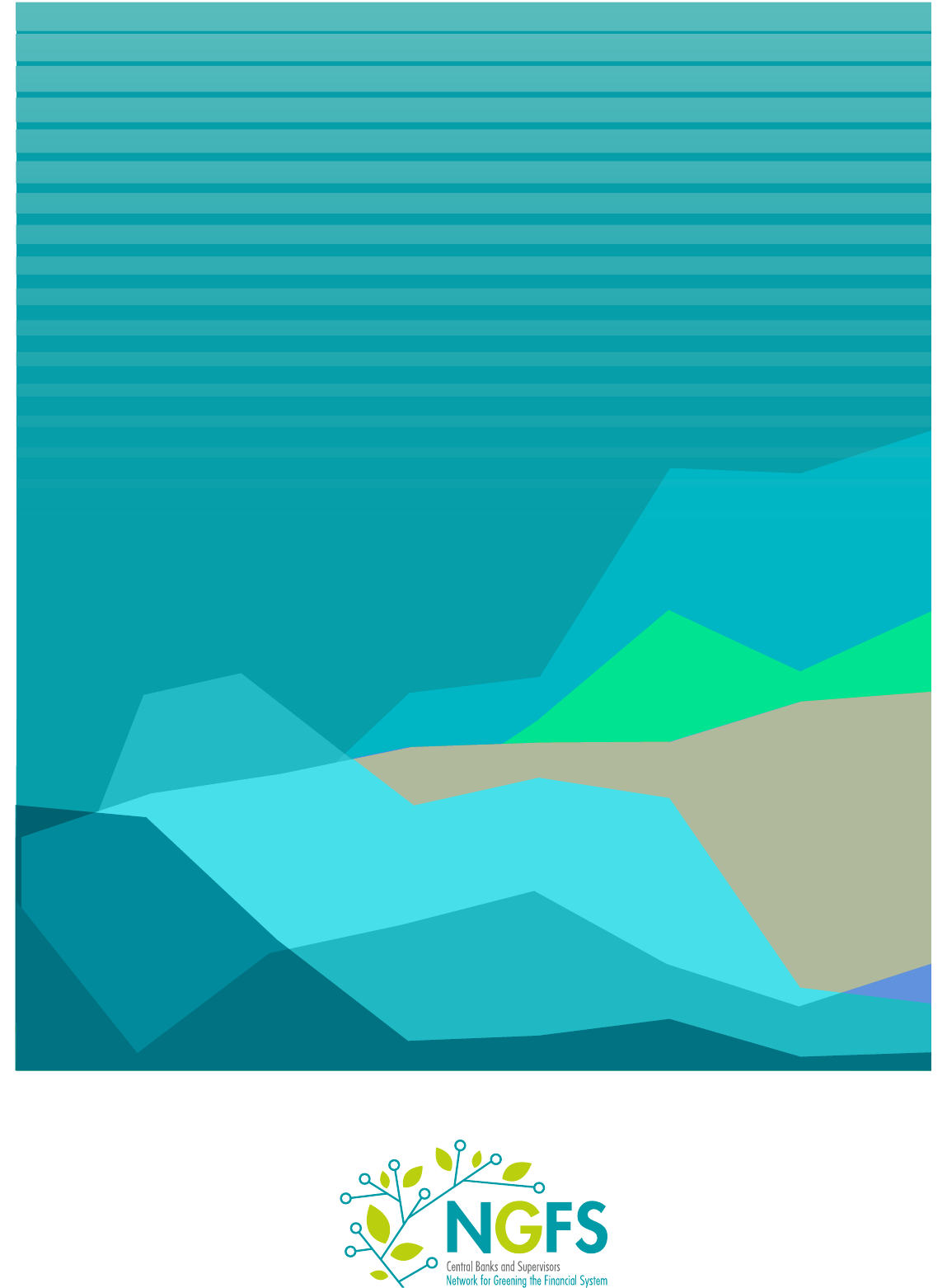
Network for Greening the Financial System
Technical document
Nature-related Financial Risks:
a Conceptual Framework
to guide Action by Central Banks
and Supervisors
July 2024

NGFS REPORT
2
T
he twin crises of environmental degradation and climate change pose a signicant threat to life on this planet.
Economic activity depends on nature and society cannot function without the various services that nature provides.
Consequently, the degradation of nature, but also actions aimed at preserving and restoring it, can have material
macroeconomic, macroprudential, and microprudential consequences. Given these far-reaching implications for
economies and nancial systems, central banks and supervisors ought to consider these existential challenges.
Encouragingly, awareness of nature-related risks is growing within the nancial system and beyond. At the end of 2022, nations
around the world adopted the Kunming-Montréal Global Biodiversity Framework (GBF) at the 15
th
Conference of the Parties
(COP15) to the Convention on Biological Diversity. The GBF aims to halt biodiversity loss and restore ecosystems by 2030 and
for humans to live in harmony with nature by 2050. It assigns a prominent role to the nancial sector, with explicit targets for
disclosure and the alignment of nancial ows.
Despite laudable progress, addressing these twin challenges remains a dicult task. The interaction between nature, climate
and the economy is exceptionally complex. At the same time, the window of opportunity for an orderly transition is rapidly
closing. The coming years are going to be critical for achieving both nature and climate goals. It is crucial that policies to address
climate change and nature degradation are designed in conjunction with each other, because without the consideration for
nature, actions to address climate change are bound to fall short. Despite the complexity, it is essential that central banks
and supervisors start to assess nature degradation and its eects on the economy and the nancial system, enhancing and
harmonising our data, metrics and scenarios along the way.
In that spirit, we are proud to publish the nal version of the NGFS Conceptual Framework on nature-related nancial risks which
seeks to guide policies and actions of central banks and supervisors. Following the release of its beta version in September 2023,
it establishes a common understanding of nature-related risks to help central banks and supervisors navigate these complex
challenges. To add colour to that understanding, the Conceptual Framework now also includes two illustrative cases that
demonstrate the application of the risk assessment framework to freshwater and forest ecosystems.
The publication of the nal Conceptual Framework is only the beginning. It marks the starting point of a continuous process to
develop knowledge and experience in this eld, being mindful of the fact that failing to act due to imperfect knowledge would
almost certainly result in a ‘too little, too late’ scenario.
We genuinely appreciate the commitment and dedication of all Task Force members, who contributed to this document, as well
as the valuable engagement of other stakeholders who provided input in the past year. Our special thanks go out to the team
lead and the illustrative cases team in helping to complement and rene the beta version.
Emmanuelle Assouan
Banque de France
Co-Chair of the Task Force
on Nature-related Risks
Sabine Mauderer
Deutsche Bundesbank
Chair of the NGFS
Foreword
Marc Reinke
De Nederlandsche Bank
Co-Chair of the Task Force
on Nature-related Risks

NGFS REPORT
3
Table of Contents
Foreword 2
1. Introduction 5
2. Understanding nature-related nancial risks 7
3. Assessing nature-related nancial risks 12
Phase 1: Identify sources of physical and transition risk 12
Exposures to impacts and dependencies 12
Forward-looking dimension 13
Scale: local and systemic dimensions 14
Climate-nature nexus 14
Phase 2: Assess economic risks 16
Direct and indirect eects 16
Micro, sectoral/regional and macro level eects 16
Substitutability 17
Phase 3: Assess risk to, from and within the nancial system 19
Contagion 19
Eects on the nancial system 19
Endogenous risk: eects of the nancial system on nature 19
4. Pathways to action 21
Introduction to the illustrative cases 23
Forests Illustrative Case: The Amazon Rainforest 25
Phase 1: Identifying sources of nature-related nancial risk 25
Phase 2: Assess economic risks 29
Phase 3: Assess risk to, from and within the nancial system 31
Freshwater Illustrative Case: the Colorado River Basin 35
Phase 1: Identifying sources of nature-related nancial risk 35
Phase 2: Assessing economic risks 38
Phase 3: Assess risks to, from and within the nancial system 41

NGFS REPORT
5
1. Introduction
As is widely acknowledged, nature is fundamental to human
well-being, a healthy planet, and economic prosperity.
Without always realising it, humans depend on nature for
food, medicine, energy, clean air and water, security from
natural disasters, recreation, and cultural inspiration (among
many other things).
But human demands have exceeded
the planet’s ability to provide such services, resulting in
a degradation of nature and its diversity at unprecedented
rates
1
. For example, monitored wildlife populations have
declined by an average of 69% since 1970
2
, and the global
rate of species extinction is tens to hundreds of times
higher than it has been over the past 10 million years
3
.
Furthermore, six of the nine boundaries that maintain the
resilience and stability of the Earth have been exceeded
4
.
This continued degradation poses a threat to well-being
5
and, more fundamentally, to the planet’s habitability
6
.
In response, the Kunming-Montreal Global Biodiversity
Framework (“GBF”) was adopted in 2022 with a new set
of goals and targets to halt and reverse biodiversity loss.
Its overarching vision is for humans to live in harmony
with nature by 2050. 23 targets are set for 2030 to achieve
this vision
7
.
The degradation of nature, and actions aimed at preserving
and restoring it, will aect our economies and nancial
systems. To illustrate, the GBF requires, among other things,
the alignment of all nancial ows by 2030 with its targets
and goals
8
. Based on the ndings of a joint NGFS-INSPIRE
study group, the NGFS has acknowledged that nature-
related nancial risks could therefore have signicant
macroeconomic implications, and that failure to account
for, mitigate, and adapt to these implications is a source of
risks relevant for nancial stability
9
. To eectively address
these risks, the NGFS has set up a task force on Biodiversity
Loss and Nature-related Risks (“Task Force”). The objective
of the Task Force is to help mainstream the consideration
of nature-related financial risks across the NGFS.
As part of this eort, the Task Force is mandated to develop
a conceptual framework on nature-related nancial
risks to guide action by central banks and supervisors
10
.
This document contains the NGFS Framework for nature-
related nancial risks (the “Framework”). The Framework
seeks to create a common science-based understanding of,
and language for, these nature-related nancial risks among
NGFS members. Its aim is to provide greater clarity on the
meaning of key concepts and the way these interrelate.
In doing so, the Framework adopts an integrated approach.
This means that climate-related nancial risks are strongly
interconnected with the broader environmental-related
nancial risks, and therefore considered within the scope
of nature-related nancial risks (without prejudice to the
relevance of the NGFS’ work on climate)
11
.
The Framework also contains a principle-based risk
assessment framework to help operationalise the
conceptual understanding of nature-related nancial
risks. In this way, the Framework helps central banks and
supervisors to identify and assess material nature-related
nancial risks. Where relevant, it may also help to develop
policies and actions in respect of those material risks while
taking into consideration the relevant jurisdictional context
and mandate. Considering that purpose, and without
being prescriptive, the Framework draws attention
1 Kunming-Montreal Global biodiversity framework (CBD/COP/DEC/15/4), December 2022.
2 Living Planet Report 2022 – Building a nature-positive society, World Wildlife Fund (“WWF”), 2022.
3 Global assessment report on biodiversity and ecosystem services of the Intergovernmental Science-Policy Platform on Biodiversity and Ecosystem Services,
The Intergovernmental Science-Policy Platform on Biodiversity and Ecosystem Services (“IPBES”), 2019.
4 Richardson, J. , et al. (2023) Earth beyond six of nine Planetary Boundaries, Science Advances.
5 Kunming-Montreal Global biodiversity framework (CBD/COP/DEC/15/4), December 2022.
6 Final Report, NGFS-INSPIRE Study Group, March 2022.
7 Kunming-Montreal Global biodiversity framework (CBD/COP/DEC/15/4), December 2022. The GBF succeeds the UN Strategic Plan for Biodiversity
2011-2020 that included the Aichi Biodiversity Targets (none of which were fully met).
8 Ibid. See Target 14.
9 Statement on Nature-Related Financial Risks, NGFS, 24 March 2022.
10 Task force “Biodiversity Loss and Nature-related Risks” Mandate April 2022 – April 2024, NGFS, 2022.
11 Consequently, nature-related nancial risks cover both “climate-related risks” and “environmental-related risks” as previously dened in: A call for
action – Climate change as a source of nancial risk, NGFS, 2019 (p. 11).

NGFS REPORT
6
to the considerations that are most likely to be relevant
from a microprudential, macroprudential and/or
macroeconomic perspective (and which may therefore
aect nancial stability or price stability). At the same
time, it is acknowledged that other facets of nature and its
degradation – such as eects on well-being or nature-related
economic opportunities – could merit consideration outside
the context of this Framework. Two illustrative cases are
included in the Framework to provide colour to the
potential application of the risk assessment framework.
By applying the Framework to the specic examples of the
Amazon and Colorado River Basin, the illustrative cases
demonstrate in a largely qualitative manner how the
dierent phases and guiding questions in the Framework
can be navigated.
The Framework is only a starting point for analysis and
action. Its content is not meant to be comprehensive or
set in stone. As knowledge and experience develops, this
Framework may be rened and supplemented over time.

NGFS REPORT
7
2. Understanding nature-related nancial risks
To mainstream the consideration of nature-related nancial
risks beyond climate across the NGFS, it is important to
start with a shared understanding of the meaning of, and
language for, these risks. This chapter denes nature-related
nancial risks and related concepts that are needed for
a high-level understanding of these risks. In doing so,
it draws on scientic literature including reports by the
Intergovernmental Science-Policy Platform on Biodiversity
and Ecosystem Services (“IPBES”). Full denitions for the
key concepts (highlighted in bold), and references to their
sources, can be found in Annex 1.
The natural world
As a starting point, it is necessary to reect briey on the
meaning of nature. Nature itself is challenging to dene,
and its interpretation depends strongly on the context in
which it is used
12
. In the IPBES Conceptual Framework, it
has been described as: “The natural world with an emphasis
on the diversity of living organisms and their interactions
among themselves and with their environment
13
.” For this
Framework, the key consideration is that the term ‘nature’
captures both the biotic (living) and abiotic (non-living)
elements on our planet, including biodiversity but also
climate. Some of these elements, such as natural resources
(plants, animals, air, water, soils, minerals etc.), are sometimes
also referred to as natural capital
14
.
12 Final Report, NGFS-INSPIRE Study Group, March 2022.
13 Díaz, S., et al. (2015) The IPBES Conceptual Framework – connecting nature and people. This denition is also referenced by the Taskforce on Nature-
related Financial Disclosures (“TNFD”) to describe nature.
14 Although not a key concept to understand or act on nature-related nancial risk, the term is referenced in the Framework to place it into context.
This terminology focuses especially on nature’s contributions to human economic activity, emphasising that nature is a stock of assets that provide
a ow of benets to people. For completeness, a full denition is provided in the glossary.
15 See Díaz, S., et al. (2018) Assessing nature’s contributions to people, Science.
16 Final Report, NGFS-INSPIRE Study Group, March 2022. See also Mace, G.M., Norris, K. & Fitter, A.H. (2012). Biodiversity and ecosystem services:
a multilayered relationship. Trends in Ecology & Evolution.
17 See for example The Economics of Biodiversity: The Dasgupta Review, February 2021. The treatment of the link between biodiversity and ecosystem
functioning in the Dasgupta review is taken from the following major reviews: Hooper, D.U., et al. (2005) Eects of Biodiversity on Ecosystem Functioning:
a Consensus of Current Knowledge. Ecological Monographs; Cardinale, B. J., et al. (2012) Biodiversity Loss and its Impact on Humanity. Nature; Tilman,D.,
Isbell, F. & Cowles, J. M. (2014) Biodiversity and Ecosystem Functioning. Annual Review of Ecology, Evolution, and Systematics.
18 Global assessment report on biodiversity and ecosystem services of the Intergovernmental Science-Policy Platform on Biodiversity and Ecosystem Services,
IPBES, 2019.
The living and non-living elements of nature combine in
ecosystems, which provide a ow of benets described as
ecosystem services (or nature’s contribution to people
15
).
Ecosystem services provide society with tangible goods
(e.g., timber or food); the regulation of natural processes
(e.g., carbon sequestration, surface temperature cooling,
watershed protection and erosion control); supporting
services (e.g., nutrient cycling and soil formation); and
cultural services (e.g., recreation and tourism). See Annex2
for more details on dierent types of ecosystems and
ecosystem services.
The ability of nature to provide these ecosystem services
depends on biodiversity
16
. Biodiversity relates to the living
elements of nature, and refers specically to variability
among living organisms which includes the diversity
within species, between species and of ecosystems.
There is strong scientic evidence that this diversity is
critical for the resilience, adaptability and productivity of
ecosystems
17
. Biodiversity should therefore be understood
as an integral characteristic of healthy ecosystems.
Degradation of nature
Human society and the global economy cannot exist
without ecosystem services. Yet, human activities have
driven an unprecedented degradation of nature and its
biodiversity that threatens the continued provision of
the very ecosystem services on which humans depend
(14 of the 18 global ecosystems have declined since 1970
18
).
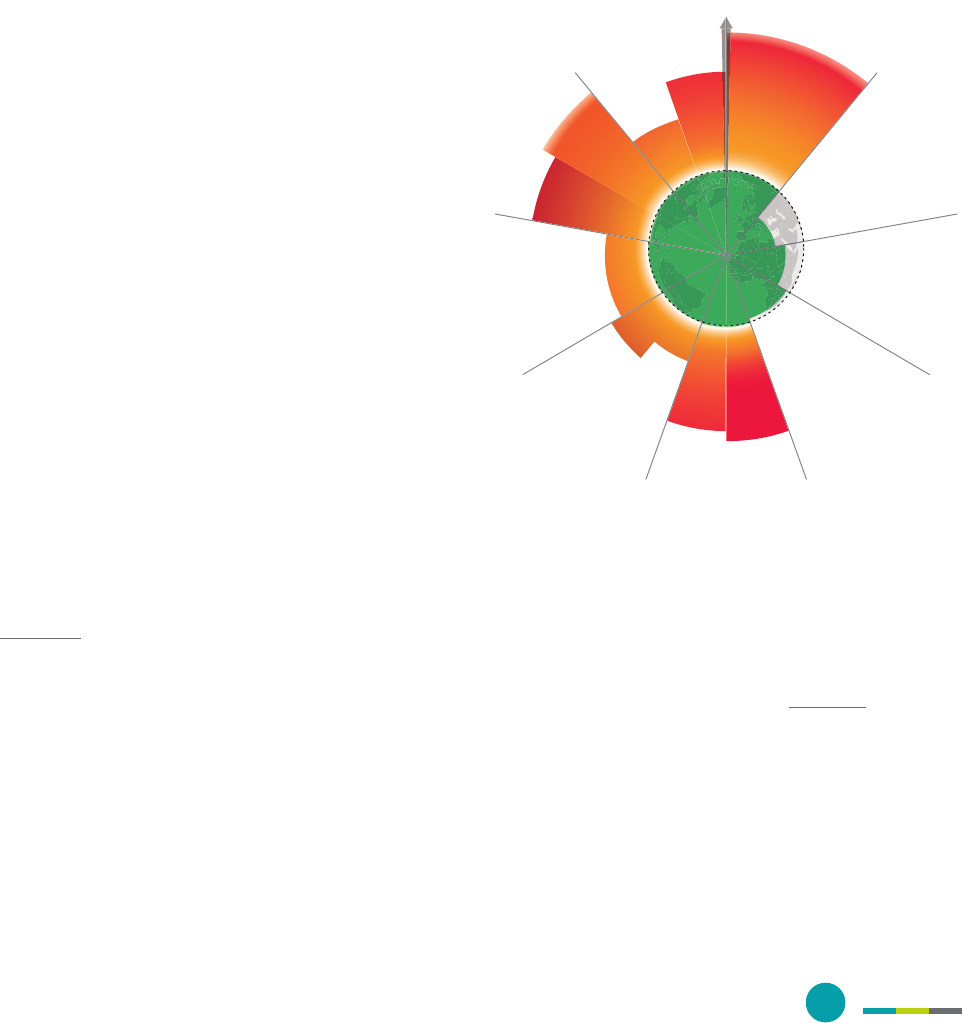
NGFS REPORT
8
Five main drivers of nature degradation have been identied,
starting with the most impactful drivers at a global level:
(i) changes in land and sea-use; (ii) over-exploitation of
natural resources (i.e., extraction of living and non-living
materials); (iii) climate change (iv) pollution; and (v) invasive
alien species
19
.
The degradation of nature can be acute (i.e. shocks such as oil
spills, forest res or pests aecting a harvest) and/or chronic
(i.e. gradual changes such as pollution stemming from
pesticide use or climate change)
20
. When that degradation
occurs, and at what scale, is often dicult to measure or
predict. Among other things, this is because changes in the
natural environment are not linear and characterised instead
by compounding eects and ‘tipping points’
21
. These tipping
points are abrupt and possibly irreversible shifts between
alternative ecosystem states
22
. The likelihood of reaching
tipping points increases when ‘planetary boundaries’ are
crossed. Planetary boundaries are a concept that indicate
limits of the Earth’s ‘safe operating space’. Leaving the
safe operating space increases the risk that large-scale
abrupt or irreversible environmental changes occur
23
.
Evidence suggests that, because of human changes and
pressures, several of these boundaries have already been
exceeded (see gure 1)
24
. To illustrate, climate change
and human alterations to water bodies and land have
led to global-scale river ow changes and shifts in water
vapour ows
25
. Such shifts in the hydrological system can
be permanent and occur abruptly.
The crossing of planetary boundaries could be therefore
interpreted as an indication of the Earth’s susceptibility to
physical hazards or shocks
26
. For example, in the case of
climate, multiple tipping points could already be triggered
when 1.5 °C global warming is exceeded (e.g. collapse
19 Described as direct drivers of change in nature in the Global assessment report on biodiversity and ecosystem services of the Intergovernmental Science-
Policy Platform on Biodiversity and Ecosystem Services, IPBES, 2019.
20 Final Report, NGFS-INSPIRE Study Group, March 2022.
21 Kedward, K., Ryan-Collins, J., & Chenet, H. (2022) Biodiversity loss and climate change interactions: nancial stability implications for central banks and
nancial supervisors. Climate Policy.; Lenton, T. M. (2013) Environmental tipping points. Annual Review of Environment and Resources.
22 Dakos, V., et al. (2019) Ecosystem tipping points in an evolving world. Nature, Ecology and Evolution. Description referenced in Final Report, NGFS-INSPIRE
Study Group, March 2022.
23 Rockström, J., et al. (2009) Planetary boundaries: exploring the safe operating space for humanity. Ecology and Society.
24 Richardson, J., et al. (2023) Earth beyond six of nine Planetary Boundaries, Science Advances.
25 See e.g. Porkka, M. (2024) Notable shifts beyond pre-industrial streamow and soil moisture conditions transgress the planetary boundary for freshwater
change. Nature Water.
26 In this context, it should be noted that the global planetary boundaries only provide a coarse indication and may not always reect the transgression
of these boundaries at a more local level.
27 Armstrong McKay, D. I., et al. (2022) Exceeding 1.5 C global warming could trigger multiple climate tipping points, Science.
28 The Framework emphasises the relevance of nature for economic activity, but a broader spectrum of values and ways of relating to nature may
motivate actions to restore nature. See also Methodological Assessment Report on the Diverse Values and Valuation of Nature, IPBES, 2022.
of ice sheets, coral reef die-o and permafrost thaw)
27
.
Crossed boundaries could also indicate domains where
action might be expected to bring the Earth back to its
safe operating space and reduce the risk of reaching
tipping points (e.g., in respect of freshwater, novel entities
such as plastics or nitrogen emissions). The latter is in
recognition of the fact that, driven by various motives
and values
28
, nature degradation has triggered action to
protect, restore, and/or reduce negative impacts on nature.
Such action can manifest as changes in regulation and policy,
legal precedent, technology, or investor sentiment and
consumer preferences.
Figure 1 Planetary boundaries
CLIMATE CHANGE
Radiative
forcing
Genetic
Functional
Freshwater use
(Blue water)
Green
water
CO
2
concentration
STRATOSPHERIC OZONE
DEPLETION
LAND-SYSTEM
CHANGE
OCEAN
ACIDIFICATION
ATMOSPHERIC
AEROSOL
LOADING
NOVEL ENTITIES
FRESHWATER CHANGE
Increasing risk
S
a
f
e
o
p
e
r
a
t
i
n
g
s
p
a
c
e
a
f
f
f
f
f
f
f
e
f
f
o
p
e
r
a
a
a
t
t
t
t
i
n
g
s
p
a
c
e
S
a
f
f
f
p
a
f
f
f
e
f
f
e
p
e
o
o
e
o
s
p
a
a
c
e
s
p
g
g
g
PN
BIOGEOCHEMICAL
FLOWS
BIOSPHERE
INTEGRITY
Source: Azote for Stockholm Resilience Centre, based on analysis in Richardson
et al. 2023).

NGFS REPORT
9
Planetary boundaries, ecosystem services and scenarios
Planetary boundaries and ecosystem services are also key concepts in the NGFS Recommendations toward the
development of scenarios for assessing nature-related economic and nancial risks (“NGFS Technical Document on
Nature Scenarios”). An understanding of these concepts may therefore help to assess nature-related risks on a forward-
looking basis. Specically, planetary boundaries and ecosystems services play an important role in the development
of nature scenario narratives (i.e., storylines that describe how the world could evolve in the future as a result of nature
degradation or actions to address it).
Planetary boundaries indicate, on a global level, the distance between the current and safe operating space for nine natural
processes that regulate the Earth system (e.g., climate change, changes in the freshwater system or the introduction of
novel entities such as microplastics). This global concept is relatively coarse, but when scaled down to a national level,
it becomes possible to identify which ecosystems are more degraded than others and therefore more likely to collapse.
This is the general idea behind the ESGAP-SESi approach for narrative development as presented in the NGFS Technical
Document on Nature Scenarios. Using 21 indicators of ecosystem health (e.g., outdoor air pollution, soil erosion rate,
sh resources), ESGAP-SESi provides an aggregate measure to determine the distance between current state and a
“healthy” operating state for dierent ecosystems. This distance can be used as a proxy to determine the potential
occurrence of physical hazards. In other words, the closer a country is to crossing thresholds for these indicators, the
less resilient the relevant ecosystem is and the more likely it becomes that physical hazards occur.
The state of these ecosystems matters because it aects the ecosystem services provided by those ecosystems on
which economic actors depend. One ecosystem can provide a number of dierent ecosystem services. These services
are typically categorised as follows (see also Annex 2):
• Provisioning services: e.g. food, raw materials like timber, fresh water;
• Regulating services: e.g. carbon sequestration and erosion control;
• Cultural services: e.g. recreation and tourism; and
• Support services: e.g. nutrient cycling and soil formation.
Ecosystem services also play a central role in the other approach to narrative development highlighted in the NGFS
Technical Document on Nature Scenarios: the INCAF-Oxford approach. This approach focuses on potential hazards and
maps the relationship between those hazards (i.e. shocks such as a grain crop pest) the particular ecosystem services
in a country or region (e.g. backwards to the disrupted ecosystem service ‘pest control’) and forwards to the eects it
has on the food provisioning services and sectors that depend on it). Relevant hazards can be selected from a initial
set of over fty hazards based on the vulnerability of the relevant county or region to those hazards.

NGFS REPORT
10
Physical and transition risks
Like climate-related risks
29
, nature-related nancial risks
can thus be categorised as physical risks (stemming from
the degradation of nature and loss of ecosystem services)
or transition risks (stemming from a misalignment of
economic actors with actions aimed at protecting, restoring,
and/or reducing negative impacts on nature). With regard
to transition risk, the misalignment often results from the
negative impacts that economic actors have on nature.
But, it is important to note that risks could also arise
from activities originally aimed at restoring nature that
no longer align with, for example, revised best practices,
new technologies or updated regulatory requirements.
Consistent with the NGFS approach for climate change,
litigation risk is considered in this Framework as a subset of
both physical and transition risks
30
. Litigation risks can arise
from a variety of factors, including liability claims, policy and
regulatory changes, and misconduct. In the case of physical
risks, litigation may be brought against a company, state or
public entity that is alleged to be responsible for causing
harm to ecosystems (which, given the often more localised
impacts on nature, may be easier to attribute to a particular
company). Equally, as part of transition risks, litigation risk
may arise when businesses fail to adapt to new regulations
and face legal consequences
31
. Mismanagement of nature
and climate risks can also lead to legal action, including
cases against directors who intentionally mislead investors
32
.
Key emerging trends related to nature-related litigation are
explored in greater detail in an NGFS Report on nature-
related litigation
33
that also explores the potential impact
of nature-related litigation for central banks, supervisors
and the nancial system.
29 A call for action – Climate change as a source of nancial risk, NGFS, 2019.
30 Climate-related litigation: Raising awareness about a growing source of risk, NGFS, 2021. It is recognised that other frameworks may adopt a dierent
approach, for instance viewing litigation risk as a separate risk category.
31 Ibid. The approach for climate-related litigation could be extended to broader nature-related litigation risks.
32 Biodiversity Risk: Legal Implications for Companies and their Directors, Commonwealth Climate and Law Initiative, December 2020.
33 Nature-related litigation: emerging trends and lessons learned from climate-related litigation, NGFS, 2024.
34 Final Report, NGFS-INSPIRE Study Group, March 2022.
Physical and transition risks can aect the economy at
micro, sectoral/regional and macro levels (including as
eects on price stability). These include eects resulting
from permanent changes in nature that have already
occurred, as well as eects from potential future changes.
Those economic risks can subsequently translate into nancial
risks that adversely aect individual nancial institutions or
nancial systems as a whole. In this context, it is important to
note that nature-related nancial risks are also endogenous:
the impacts that economic and nancial actors have on
nature aect the nancial risks these actors need to manage.
For instance, through the economic activities that they
nance, nancial institutions can contribute to the build-up
of nature-related financial risks (or contribute to the
reduction of such risks)
34
. Figure 2 provides an overview
of the relevant transmission channels.
In light of the above, nature-related nancial risks are
dened as follows for the purposes of this Framework:
Nature-related nancial risks refer to the risks of negative
eects on economies, individual nancial institutions and
nancial system that result from:
i. the degradation of nature, including its biodiversity, and
the loss of ecosystem services that ow from it (i.e., physical
risks); or
ii.
the misalignment of economic actors with actions aimed
at protecting, restoring, and/or reducing negative impacts
on nature (i.e., transition risks).
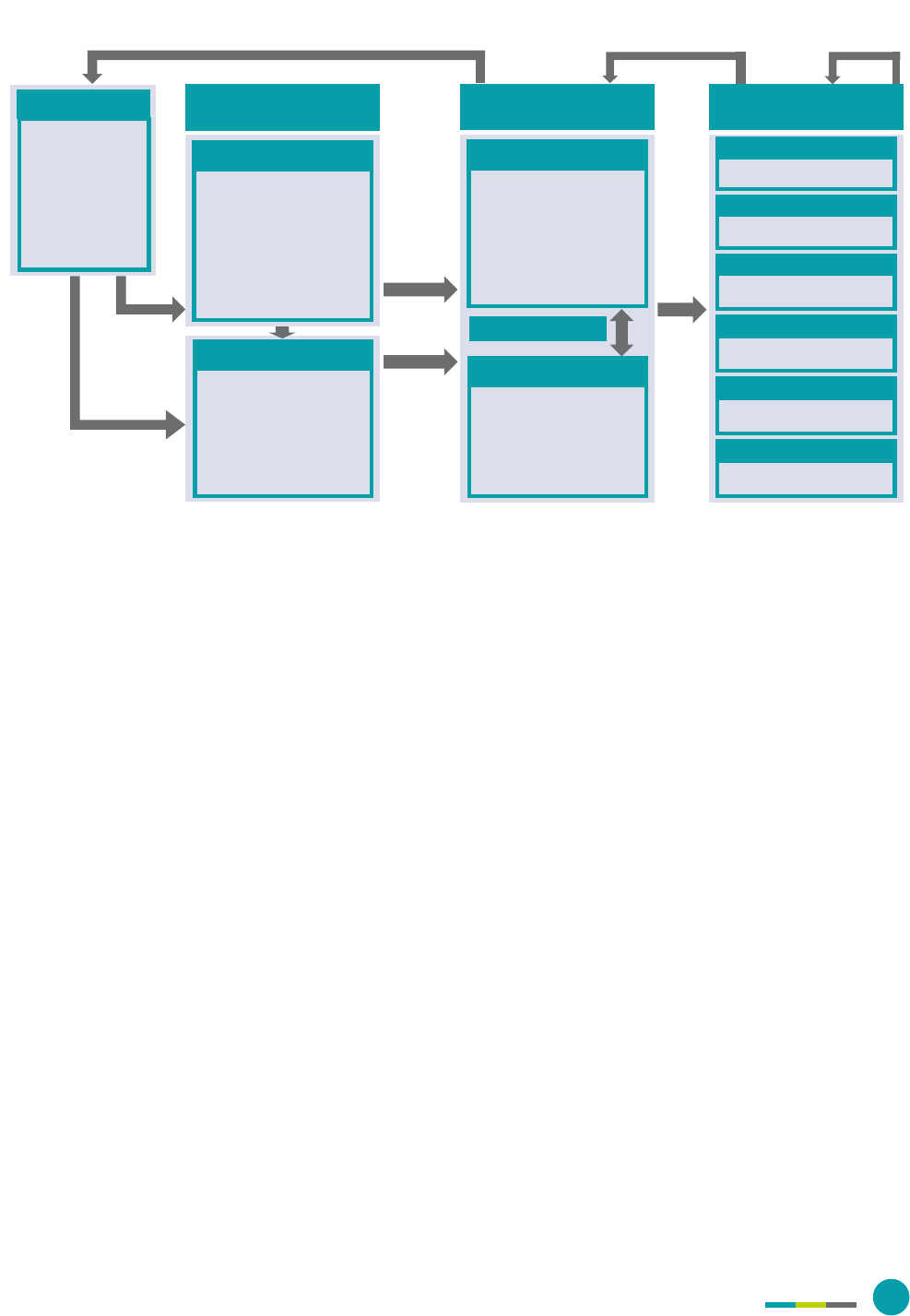
NGFS REPORT
11
Figure 2 Transmission channels
Sources
of risk
Physical risk
Provisions (sh, timber, energy)
Climate, surface temperature
and hydrological cycle regulation
Water capture and ltration
Soil quality
Hazard protection from storms
and oods
Habitat, species and
biodiversity intactness
Transition risk
Misalignment with actions aimed
at protecting, restoring, and/or
reducing negative impacts on
nature, e.g. via:
-
Regulation/policy/legal precedent
-
Technology
-
Consumer and investor
preferences
Economic
risks
Micro
Microeconomic eects on
businesses/households, e.g. via:
-
Damage to assets
-
Stranded assets
-
Higher or more volatile prices
-
Disruption of processes
-
Relocation and adjustment
of economic activities
-
Reduced human health and/or
labour productivity
Macro
Macroeconomic eects, e.g. via:
-
Prices
-
Productivity
-
Trade and capital ows
-
Capital (investment
needs/depreciation)
-
Socio
-economic changes
-
Fiscal balances
Financial
risk
- Increases in defaults
- Collateral depreciation
Nature
Degradation of nature
and its ecosystems
driven by:
Land use change
Overexploitation
Climate change
-
Pollution
Invasive alien species
Regional/sectoral
- Repricing of assets
- Fire sales
-
Increased insured losses
-
Increased insurance gap
-
Shortages of liquid assets
-
Renancing risk
Operational risk
-
Disruption of nancial
institution’s processes
Risks from
dependence
and impact
on nature
Endogenous risk (impact of
nanced activities on nature)
Feedback between economy
and nancial sector
Contagion within
nancial system
Liquidity risk
Underwriting risk
Market risk
Credit risk
Strategic risk
-
Increased uncertainty
-
Change of business model
Decline of ecosystem services, e.g.:
-
-
-
-
-
-
-
-
-
-
-
Sources: Adapted from Svartzman, R. et al. (2021) A “Silent Spring” for the Financial System ? Exploring Biodiversity- Related Financial Risks in France.

NGFS REPORT
12
3. Assessing nature-related nancial risks
Based on the understanding of nature-related nancial
risks, this chapter oers a framework to help central
banks and supervisors identify and assess those nature-
related nancial risks that are material for their economy
and nancial system. Its aim is to help operationalise
the conceptual understanding of nature-related nancial
risks. At the same time, it should be noted that analytical
methodologies and risk management practices are still being
developed
35
. Furthermore, actions taken will depend on the
context in each jurisdiction and organisation, including
Phase 1: Identify
sources of physical
and transition risk
Phase 2: Assess
economic risks
Phase 3: Assess risk
to, from and within
the nancial system
35 For instance, the NGFS Technical Document on Nature Scenarios provides several recommendations to advance the development of scenarios to
assess economic and nancial risk. See Recommendations toward the development of scenarios for assessing nature-related economic and nancial
risks, NGFS, December 2023.
36 Adapted from the approach for forward-looking risks assessments in the Final Report, NGFS-INSPIRE Study Group, March 2022.
37 This phase shares similarities with the ‘Locate’ and ‘Evaluate’ phases in the TNFD LEAP approach.
38 For a more detailed description and references to the risk assessments, see the Final Report, NGFS-INSPIRE Study Group, March 2022.
For more recent work, see also: Martinez-Jaramillo, S., et al. (2023) Dependencies and impacts of the Mexican banking sector on ecosystem services;
Boldrini S., et al. (2023) Living in a world of disappearing nature: physical risk and implications for nancial stability, European Central Bank (“ECB”);
Ceglar, et al. (2023) The impact of the euro area economy and banks on biodiversity, ECB; Assessing Nature-Related Financial Risks: The Case of Lithuania,
Bank of Lithuania, December 2023; The Nature of Finance – Assessing the nature-related risks and opportunities for the Irish Financial Sector;
KPMG on behalf of Ireland’s International Sustainable Finance Centre of Excellence; December 2023; Bayangos, V. B., et al. (2023) The Impact of
Biodiversity Loss on the Philippine Banking System: A Preliminary Analysis; Nikuradze, E. & Tvalodze, S. (2023) Biodiversity-related Financial Risks –
why it matters and how can we measure them?, National Bank of Georgia.
dierences in mandates. Considering this need for exibility,
the current Framework adopts a principle-based approach
(as opposed to providing detailed, prescriptive guidance).
The principle-based risk assessment framework consists of
three phases
36
. A few guiding questions are provided at
the end of each phase to draw attention to key elements
that central banks and supervisors could consider as part
of their risk identication and assessment. For an overview,
see Annex 3.
Phase 1: Identify sources of physical
and transition risk
As a rst step, central banks and supervisors could identify
the sources of risk that are potentially material from a
microprudential, macroprudential and/or macroeconomic risk
perspective
37
. This section provides a high-level approach to
the identication and prioritisation of sources of physical
and transition risk based on exposures. As part of the
approach, particular attention is drawn to the relevance of
forward-looking, location-specic and systemic dimensions.
Further details are also provided on the interlinkages
between climate and the broader dimensions of nature.
The latter is intended to help supplement existing climate-
related eorts and enable a more integrated approach to
risk management.
Exposures to impacts and dependencies
Analysing the exposures to dependencies on nature and/or
impacts of economic activity on nature can be a rst step
to identify sources of physical and transition risks (both as
dened in chapter 2). Examples of such exposure analyses
include the physical risk analyses based on the ENCORE
database as conducted in the Netherlands, France, Brazil,
Malaysia, Mexico, the euro area and other jurisdictions
38
.
The outcomes of the initial exposure analysis can help to
identify sectors and/or ecosystems services that are more
likely to be sources of material risk (and could therefore
be prioritised as a starting point for the assessment of risk
in phases 2 and 3).

NGFS REPORT
13
•
Sector-based prioritisation: Identify key economic
activities or sectors that are more likely to be at risk based
on the level of their dependencies/impacts on nature
(including via value chains) as well as their relevance to
the economy, individual nancial institutions or nancial
sector (e.g. the value of the exposure compared to the
total value of exposures analysed). To illustrate, economic
activities with high impacts and dependencies on nature
occur in sectors that include agriculture, aquaculture
and sheries, forestry, metals and mining, transport,
energy and utilities, textiles and apparel, chemicals
and pharmaceuticals, construction and infrastructure
39
;
and/or
•
Ecosystem-based prioritisation: Identify key ecosystem
services on which economic activities depend, thereby
considering the ecosystems from which they originate
and the vulnerability of those ecosystems given negative
impacts on them (see also Annex 2 for more detail on
the dierent ecosystems and ecosystem services)
40
.
The above analysis may only yield a partial picture of
potential sources of risk due to remaining uncertainties
and data constraints. Other indications of potential risks
(both quantitative and qualitative) may therefore need to
be considered. The sections below seek to complement
the initial exposure analysis by drawing attention to
the relevance of forward-looking, location-specic and
systemic dimensions.
Forward-looking dimension
The initial analysis as described above provides a static
snapshot of current exposures. This could be supplemented
with scenario analyses to explore exposures – and therefore
sources of physical and transition risks – on a forward-
looking basis
41
. For physical risks, the source of risk can be
the extrapolation of a trend or hypothetical shock in which
one or more ecosystems or ecosystem services degrade
or collapse
42
. For transition risks, existing and announced
nature-related policies on a global, regional and/or national
level could provide a starting point to develop scenarios
(for example the GBF, which denes 2030 targets on, among
other things, protecting 30% of land and water
43
or the
reduction of harmful subsidies
44
)
45
. It is relevant to understand
and consider the expected time horizon for these scenarios
(i.e., will they materialise in the short, medium or long term).
Lessons can be learnt from previous work on climate
scenarios when developing such forward-looking exposure
analyses (and, if feasible, forward-looking risk assessments
in phases 2 and 3). But nature presents a number of open
questions and unique challenges that must be carefully
accounted for
46
. To assist central banks and supervisors with
forward-looking analyses, the Task Force has produced a
Technical Document on Nature Scenarios. The documents
identies a number of challenges that must be accounted
for when developing nature scenarios. At the same time,
39 Based on sectors highlighted in Sector Guidance – Additional guidance for nancial institutions (v. 1.0), TNFD, September 2023, WWF Risk Filter –
Overview – dependencies and impacts, WWF; The Biodiversity Crisis Is a Business Crisis, Boston Consulting Group (“BCG”), 2021; Nature Risk Rising:
Why the Crisis Engulng Nature Matters for Business and the Economy, World Economic Forum (“WEF”), 2020.
40 For examples, see also Guidance on biomes (v. 1.0), TNFD, September 2023.
41 And, in phases 2 and 3, assess risk on a forward looking basis (e.g. via a stress test).
42 See for instance: An Exploration of Nature-Related Financial Risks in Malaysia, World Bank Group and Bank Negara Malaysia, 2022; Prodani, J., et al. (2023)
The economic and nancial stability repercussions of nature degradation for the Netherlands: Exploring scenarios with transition shocks, DNB. For an
assessment of economic risk (i.e. phase 2), see also: Johnson, J. A., et al. (2021) The Economic Case for Nature: A Global Earth-Economy Model to Assess
Development Policy Pathways.
43 See e.g. Indebted to nature: Exploring biodiversity risks for the Dutch nancial sector, De Nederlandsche Bank (DNB) and The Netherlands Environmental
Assessment Agency (PBL), 2020.
44 More information on the targets is at www.cbd.int/gbf/targets/. For a discussion, see also COP15 marked a decisive moment for central banks and
supervisors to address nature risks in the Anthropocene, Grantham Research Institute on Climate Change and the Environment, January 2023.
45 The NGFS Technical Document on Nature Scenarios also contains a review of various transition policies and trends to help identify plausible
transition shocks.
46 For further details: Final Report, NGFS-INSPIRE Study Group, March 2022. See also The TNFD’s proposed approach to scenario analysis, TNFD,
November 2022.

NGFS REPORT
14
it oers approaches that central banks and supervisors
can use to better understand the nature-related nancial
risks on a forward-looking basis. This includes suggestions
for the use of input-output tables and models, biophysical
models, and nature-economy models. First examples
of such forward-looking risks assessments include the
two case studies incorporated in the Technical Document on
Nature Scenarios, an explorative scenario study published
by DNB and an assessment of nature-related nancial risks
for the UK
47
.
Scale: local and systemic dimensions
Nature is spatially explicit. In other words, nature is distinct
for each location and diers across locations. This is also the
case for the impacts and dependencies on it. For example,
activities may rely on ecosystem services provided by local
ecosystems, or negative impacts may occur in ecosystems
that are already fragile. Therefore eorts to identify and
prioritise risks should take into account the geographical
location of impacts and dependencies
48
.
At the same time, local impacts and dependencies can
have systemic implications due to spill-over and feedback
eects. In addition to any direct eects of impacts and
dependencies on a limited number of individual parts
or actors in the system (such as a particular ecosystem,
household, company or nancial institution), risk may
therefore also originate from more complex and indirect
causal chains
49
. This ‘local-global trade-off’ presents
challenges in coordinating between the micro-level scale
of analysis (location-specic) and the macro-level global
scale (systemic eects)
50
.
Considering these systemic dimensions may help to
prioritise, e.g. by focusing eorts on identifying critically
important ecosystems and the dierent risk transmission
channels that stem from them. These considerations include:
•
Compounding eects: The degradation of one ecosystem
or ecosystem service may trigger a degradation or a
collapse of others
51
. To illustrate, the collapse of globally
important ecosystems like the Amazon may disrupt other
ecosystems at a global level, including via eects on
climate change. Physical and transition risks also interact
over time. In particular, the loss of certain ecosystems
may trigger local, regional or global policy responses
that result in transition risk.
•
Cascading eects: Physical and transition risks may
cascade and amplify via value chains (included in
the Framework as part of phase 2 under Direct and
indirect eects). When taking a sector-based approach to
prioritisation, this systemic dimension should particularly
be kept in mind to avoid an underestimation of risk
52
.
•
Contagion: The eect of physical and transition risks
on individual nancial institutions has the potential
to spread throughout nancial systems and/or create
feedback loops to the real economy (included in the
Framework as part of phase 3 under Contagion).
Climate-nature nexus
As already highlighted, nature is multifaceted, which, as
stated previously, covers both biotic and abiotic elements
such as water, land use, nitrogen and phosphorus ows,
biodiversity as well as climate. Previous work of the NGFS
has focused largely on climate, and rmly established the
relevance of climate-related risks for central banks and
supervisors. However, the relevance of the broader nature
dimensions – described as environmental risks – has been
recognised by the NGFS
53
. This has led to a positioning
of climate and environmental risks as two distinct but
interrelated issues.
The various dimensions of nature have unique features,
and are distinct in some respects. However, it is important
to recognise that the dierent dimensions of nature are
47 Recommendations toward the development of scenarios for assessing nature-related economic and nancial risks, NGFS, December 2023;
Prodani, J., et al. (2023) The economic and nancial stability repercussions of nature degradation for the Netherlands: Exploring scenarios with
transition shocks, DNB.; Ranger, N. & Oliver, T. (2024) Assessing the Materiality of Nature-Related Financial Risks for the UK.
48 For an example of a spatially-explicit study taking into account the location of exposures, see e.g. Hadji-Lazaro, p., et al. (2023) Socioeconomic and
spatially-explicit assessment of Nature-related risks: The case of South Africa.
49 Final Report, NGFS-INSPIRE Study Group, March 2022. See also Crona, B., Folke, C., & Galaz, V. (2021) The Anthropocene reality of nancial risk. One Earth.
50 See pp. 27-28 of the NGFS Technical Document on Nature Scenarios.
51 For instance, regulating and maintenance ecosystem services are complementary to one another, meaning that if one of them is disrupted suciently,
the others will be disrupted as well. See The Economics of Biodiversity: The Dasgupta Review, February 2021.
52 For a recent example of an indirect exposure analysis, see Boldrini S., et al. (2023) Living in a world of disappearing nature: physical risk and implications
for nancial stability, ECB.
53 A call for action – Climate change as a source of nancial risk, NGFS, 2019.

NGFS REPORT
15
also closely interconnected
54
. Therefore, even as the NGFS
continues its work in further understanding climate-related
nancial risks, it is equally important to consider risks
stemming from climate and the other dimensions of nature
in an integrated manner. To facilitate such an integrated
assessment, nature-related nancial risks as dened in this
Framework incorporate the full spectrum of climate and
environmental risks
55
. In other words, for the purposes of
the Framework, climate-related risks are considered to be
part of nature-related nancial risks.
There may be pragmatic reasons why an integrated
assessment of nature-related nancial risks is not always
possible or desirable (e.g., as a result of modelling
challenges). Furthermore, from a practical perspective,
climate-related nancial risks are more established and will
in many cases be the starting point for action on broader
nature-related nancial risks. To enable the shift towards
an integrated assessment of nature-related nancial risks,
the Framework has therefore generalised the existing NGFS
approach to climate where possible. In addition, the table
below describes some of the key interlinkages between
climate and broader-nature-related nancial risks that
could be considered when taking rst steps toward a more
integrated approach
56
. In short, the physical dynamics
driving climate change and the degradation of nature
are mutually reinforcing. Additionally, climate mitigation
and nature restoration present potential trade-offs
and synergies
57
.
Connection Description
Climate change as a driver of nature risk Climate change, and the resulting rising global temperatures, is one of the main
direct drivers of nature degradation. For example, increases in ooding, wildres,
ocean acidication and cyclones as a result of climate change can disrupt the
water cycle, alter soil temperatures and accelerate habitat and wildlife loss.
Nature degradation as a driver of climate risk Loss of key ecosystems increases the pace of climate change through adverse
changes in the carbon, nitrogen, and water cycles. Additionally, the destruction
of forests, peatlands, and other carbon-sequestering ecosystems may accelerate
climate change through the release of long-stored carbon into the atmosphere
alongside a reduced ability to sequester future carbon. The destruction of
ecosystems such as wetlands or mangroves may also alter natural infrastructure
that is important for climate resilience.
Climate change mitigation and adaptation as a potential
driver of nature risk
Combating climate change can slow the climate-driven deterioration of
ecosystems. But, certain strategies for climate change mitigation/adaptation and
achieving net-zero goals have the potential to cause inadvertent negative eects
on ecosystems. For example, biodiversity can be harmed by poorly planned tree
planting to capture carbon dioxide emissions (e.g. of non-native species and
monocultures), mining of materials for battery storage technology, destruction of
natural areas to install solar installations, or land use changes to full bioenergy
needs (e.g. deforestation for wood or planting biofuel crops).
Nature as a solution to decrease climate risk
(i.e. nature-based solutions
1
)
Restoration and preservation of ecosystems contributes substantively to
mitigating climate change and therefore plays a key role in achieving the goals
of the Paris agreement. As suggested above, combatting deforestation and
peatland destruction can prevent the release of stored carbon and facilitate
future carbon sequestration. Conservation or extension of natural systems can
also help to adapt to the eects of climate change (e.g. disaster risk reduction).
For example, ecosystems such as wetlands, forests, mangroves and dune habitat
increase resilience to physical shocks (e.g. storms, wildres, landslides or oods)
by providing protective barriers or buers.
1 Nature-based Solutions are dened by the UN Environment Assembly (Resolution 5/5 of 2 March 2022) as: “actions to protect, conserve, restore,
sustainably use and manage natural or modied terrestrial, freshwater, coastal and marine ecosystems which address social, economic and environmental
challenges eectively and adaptively, while simultaneously providing human well-being, ecosystem services, resilience and biodiversity benets.”
54 Based on, inter alia: Final Report, NGFS-INSPIRE Study Group, March 2022; Pörtner, H. O., et al. (2021) IPBES-IPCC co-sponsored workshop report on
biodiversity and climate change. IPBES and IPCC.
55 Kedward, K., Ryan-Collins, J., & Chenet, H. (2022) Biodiversity loss and climate change interactions: nancial stability implications for central banks and
nancial supervisors. Climate Policy.
56 Based on, inter alia: Final Report, NGFS-INSPIRE Study Group, March 2022; Pörtner, H.O., et al. (2021) IPBES-IPCC co-sponsored workshop report on
biodiversity and climate change. IPBES and IPCC.
57 Kedward, K., Ryan-Collins, J., & Chenet, H. (2022) Biodiversity loss and climate change interactions: nancial stability implications for central banks and
nancial supervisors. Climate Policy.

NGFS REPORT
16
Phase 2: Assess economic risks
Analysing exposures in phase 1 only provides an indication
of potential physical and transition risks, which does not
yet equate to a risk assessment. As a second step, central
banks and supervisors could assess the potential economic
eects and identify material economic risks that can stem
from these exposures
58
. These may be relevant in their own
right as macroeconomic risks (e.g., inationary pressures) or
transmit physical and transition risks to the nancial sector.
This section draws attention to three elements that should
at least be considered when assessing economic risks:
(i) direct and indirect eects; (ii) micro, sectoral/regional
and macro eects; (iii) substitutability.
Direct and indirect eects
Physical and transition risks affect households and
businesses via their direct dependence or impact on
nature. This eect on primary producers (e.g. farmers) and
consumers is also described as the direct eect (or rst-
order eects). However, the economic eects of physical
and transition risks are not limited to direct eects. Instead,
as also mentioned in phase 1, risks may cascade through
value chains – and between sectors – to other parts of
the economy and/or across borders. Indirect eects (or
second-order eects) capture this transmission of direct
eects via value chains.
Micro, sectoral/regional and macro level eects
Via direct and indirect transmission channels, physical
and transition risks can have both microeconomic and
macroeconomic eects. On a micro level, physical and
transition risks can affect businesses and households
dependent on ecosystem services to sustain their livelihood.
For instance, households may suer a loss of income and
higher livelihood costs as a result of weather-related
damages or the eects of nature degradation on health and
productivity. On a macro level, physical and transition risks
may have implications for prices, productivity, investment,
socio-economic changes, scal balances and trade and
capital ows (in particular aecting ination and gross
domestic product (“GDP”)).
Questions for members to consider when identifying sources of physical and transition risks:
1) Current exposures: Which direct and indirect dependencies does the economy and the nancial sector (incl. via
insured and nanced activities) have on ecosystem services? Which direct and indirect negative impacts does the
economy and the nancial sector have on nature? Which of those dependencies and negative impacts could be
material sources of physical and transition risk from a microprudential, macroprudential and/or macroeconomic
risk perspective?
2) Priorities: What are the key sectors with the highest impacts and dependencies (both direct and indirect) on nature?
What are the critical global, regional and/or local ecosystems these key sectors, or the economy/nancial sector as a
whole, interact with, and where are they located? What is the current or estimated state of these critical ecosystems?
3) Forward-looking view: Are there any future developments that should be considered when assessing sources of
physical and transition risks such as emerging policy frameworks or the sudden collapse of one or more ecosystem
services? Over what time horizon are these forward-looking developments expected to materialise?
4) Climate-nature nexus: How does the consideration of climate change (and related mitigation/adaptation strategies)
aect the identication of potential nature-related nancial risk? Could sectors with large dependencies or impacts
on nature be contributing to climate change, or be aected by it? Which strategies for climate change mitigation have
the potential to cause inadvertent negative eects on ecosystems, thereby amplifying nature-related nancial risks?
58 This phase shares similarities with the ‘Assess’ phase in the TNFD LEAP approach. For more information on measurement approaches, see also:
Assessing biodiversity-related nancial risks: Navigating the landscape of existing approaches, OECD, April 2023.

NGFS REPORT
17
The micro and macro level effects are not isolated.
Microeconomic eects can translate into macroeconomic
eects, while macroeconomic eects also can in turn
aect households and businesses (potentially giving rise
to feedback loops). Introduction of a sectoral/regional
level eects in the analysis might be benecial to better
capture these dynamics (see also gure 2). The table above
highlights some of the key economic eects
59
:
Substitutability
To assess the economic eects and risks, it is relevant
to account for the fact that actors react dierently to
shocks depending on their sensitivity to the shock and
their ability to adapt
60
. The notion of substitutability
is particularly relevant in that regard. Two dimensions
can be distinguished: geographical substitution and
technological substitution.
• Geographical substitution (i.e., between ecosystem
services): In the case of direct eects, the ability to adapt
and rely on dierent ecosystem services may be limited.
For example, when ecosystem services decline in a
particular location, it could require a business to move its
operations (with economic implications for the aected
region) or make expensive alterations to its production
processes. Businesses which are indirectly aected –
i.e., through their value chain – may be in a better position
to substitute, for example by changing suppliers or using
dierent products (although such substitutes may not
always exist). Consequently, jurisdictions or businesses
with a higher reliance on primary sectors could be more
exposed to economic eects
61
. At the same time, the
large scale global degradation of ecosystems could make
it increasingly dicult to nd alternative sources of the
required ecosystem services, including for jurisdictions
and businesses that are indirectly exposed.
Micro level eects
Regional/
sectoral level
Macro level eects
Capital destruction: Damage to assets arising from
physical shocks and hazards such as ooding
or landslides.
Prices: Changes in prices of commodities, energy or water
could create inationary pressure.
Stranded assets: New regulations or changing consumer
preferences resulting in premature write-os of assets,
for instance because a factory is located in an area that
becomes designated as protected.
Productivity: Eects on GDP from a diversion of
investment or lower risk appetites for innovation, reduced
labour productivity (e.g. as a result of heat or pollution),
the loss of provisioning or regulating service productivity
(e.g. aecting agriculture) or damage and disruptions
to assets.
Price volatility of raw materials: Higher or more volatile
prices of commodities due to, for instance, failed harvests
of food crops.
Capital: Higher investment needs for mitigation or
adaptation to prevent nature degradation and potentially
accelerated depreciation of the current capital base.
Disruptions of production processes and value chains:
Increases in costs as a result of temporary disruption to
businesses or households processes, such as a suspension
of services due to ooding.
Socio-economic changes: Eects from structural changes
to the economic system, changing societal preferences,
arising inequalities, migration or conict.
Relocation and adjustment of economic activities:
Relocation or alteration of economic activities to account
for a reduction or loss of ecosystem services, or to reduce
negative impacts, such as planting dierent crops
on a farm.
Trade and capital ows: Changes to trade and capital
ows may result from shocks in ecosystem service
provision, potentially amplied via value chains, which
aects exchange rates and sovereign credit ratings.
Pricing of externalities: Cost increases as a result of pricing
in negative (or positive) impacts on nature, for instance a
tax on certain pollutants.
Fiscal balances: The lack of access to ecosystem services
may require an increase in social protection spending on
e.g. water or food. Losses in production and employment
may also reduce scal revenues.
59 Based on, inter alia: Indebted to nature: Exploring biodiversity risks for the Dutch nancial sector, DNB and PBL, 2020; Handbook for Nature-related
Financial Risks, Cambridge Institute for Sustainability Leadership (“CISL”), 2021; Final Report, NGFS-INSPIRE Study Group, March 2022. For further
examples, see also A Supervisory Framework for Assessing Nature-related Financial Risks – Identifying and navigating biodiversity risks, OECD, 2023.
60 Final Report, NGFS-INSPIRE Study Group, March 2022; Svartzman, R., et al. (2021) A “Silent Spring” for the Financial System? Exploring Biodiversity-
Related Financial Risks in France; Recommendations toward the development of scenarios for assessing nature-related economic and nancial risks,
NGFS, December 2023.
61 See for instance: Johnson, J. A., et al. (2021) The Economic Case for Nature: A Global Earth-Economy Model to Assess Development Policy Pathways.
The higher decline in GDP that was measured for low-income and lower-middle-income countries was due, in part, to a high dependency on forestry
or pollinated crops along with limited possibilities to switch to other production and consumption options.

NGFS REPORT
18
•
Technological substitution (i.e., between natural
and manufactured/human capital): There is a broader
question to consider around the ability of businesses
to adapt to physical shocks by substituting the loss
of ecosystem services with technologies and other
alternatives. For example, loss of pollinators may be
replaced by mechanical pollination technologies.
But if nature cannot be fully substituted – or substituted
at all – the eects of losing ecosystem services will
be far larger than if replacement technologies are
used. Assumptions on the availability of replacement
technologies in a particular sector or region are therefore
important because they inuence the size of estimated
potential economic eects. Standard macroeconomic
models generally assume a high degree of possible
substitutability, and therefore have tended to estimate
relatively small economic costs of nature degradation
as a percentage of GDP
62
. Given that a broad academic
literature has argued that substitution possibilities may be
limited or even impossible for environmental goods and
services (including, regulating and maintenance services),
models may therefore need to embrace the possibility that
nature cannot be – or not easily be – substituted
63
.
When accounting for substitution, it may be appropriate
to consider how adaptation possibilities might change
over time and at what scale. For instance, there may be
very low or even no adaptation options in the short-term
period following a physical shock (e.g. due to contractual
obligations, entrenched consumer preferences or
technological limitations). However, this might change
as replacement technologies become available over the
medium term. Equally, it is possible to imagine some
substitution possibilities for quite small changes in
ecosystem services, but these might reduce drastically
for substantial nature degradation (such as those resulting
from tipping points). Other factors such as costs (especially
in the short run) and negative impacts on nature may
also inuence the availability and eects of substitutes
over time.
Questions for members to consider when assessing economic risks:
1) Value chains: Where are the direct economic eects located (domestically or abroad)? Can direct eects transfer
across borders and/or amplify (including domestically) through value chains, thereby resulting in indirect economic
eects? Can risks cascade to dierent value chains?
2) Micro-macro interaction: To what extent do economic eects on households and businesses as a result of nature-
related nancial risks lead to macroeconomic deterioration, including lower productivity or inationary pressures?
Are there any risks that directly create eects at the macro level? Could macroeconomic deterioration aect or
create a feedback loop to the micro level?
3) Vulnerability, adaptation and substitution: How vulnerable are economic actors given their ability to adapt
(e.g. via substitution)? For the identied economic transmission channels, what technological or geographical
substitution possibilities are available that could mitigate the eects of shocks and hazards? How would these
possibilities change as the size of the shock or hazard increases?
62 The Economics of Biodiversity: The Dasgupta Review, February 2021. See also Recommendations toward the development of scenarios for assessing
nature-related economic and nancial risks, NGFS, December 2023; Svartzman, R., et al. (2021) A “Silent Spring” for the Financial System? Exploring
Biodiversity-Related Financial Risks in France.
63 Recommendations toward the development of scenarios for assessing nature-related economic and nancial risks, NGFS, December 2023 (referencing:
The Economics of Biodiversity: The Dasgupta Review, February 2021; Neumayer, E.; (2013) Weak versus Strong Sustainability: Exploring the Limits
of Two Opposing Paradigms. Cheltenham: Edward Elgar Publishing.

NGFS REPORT
19
Phase 3: Assess risk to, from
and within the nancial system
As a third step, central banks and supervisors may want to
consider the nancial risks that stem from the exposures
to sources of physical and transition risks (directly, or more
likely, via nanced activities)
64
.
Prudential risk categories Examples of potential nature-related factors aecting prudential risks
Strategic and business model risk The loss of ecosystems aects the ability of pharmaceutical companies to rely on
particular natural resources for their drug development or production.
Credit risk Soil degradation aects agricultural productivity, inuencing the collateral value of
agricultural land or the ability of farmers to repay debt.
Market risk The market value of a company is aected by assets that have decreased in value
because there is insucient fresh water for the production process, or the value of
the business’ production process is reduced by the emergence of new technologies
that require less water to operate.
Underwriting risk Pandemic causes more claims under insurance than usual or soil erosion leads to
more damaging eects of oods.
Operational risk Financial institution faces reputation or litigation risks as a result of nancing
a company engaged in activities that contribute to deforestation.
Facilities/suppliers of the nancial institution are aected by ooding or landslides.
Liquidity risk There may be pressure to liquidate assets due to rapid nature degradation as a
result of crossing a tipping point or new regulations aecting particular assets that
inuence cash ows and collateral values.
64 Like Phase 2, this phase shares similarities with the ‘Assess’ phase in the TNFD LEAP approach.
65 Based on, inter alia: Final Report, NGFS-INSPIRE Study Group, March 2022; Indebted to nature: Exploring biodiversity risks for the Dutch nancial sector,
DNB and PBL, June 2020; Handbook for Nature-related Financial Risks Key concepts and a framework for identication, CISL, 2021. For further examples,
see also A Supervisory Framework for Assessing Nature-related Financial Risks – Identifying and navigating biodiversity risks, OECD, 2023.
66 Interim Report, NGFS-INSPIRE Study Group, October 2021.
67 A Supervisory Framework for Assessing Nature-related Financial Risks – Identifying and navigating biodiversity risks, OECD, 2023.
Eects on the nancial system
The eects of nature degradation and related policies on
the economy can transmit to nancial institutions and can
have an impact on the nancial system. Similar to climate-
related risks, they can lead to the impairment of assets and
collaterals; lower corporate protability and the impairment
of insurability, aecting traditional nancial risk categories.
The table below illustrates this
65
.
Contagion
The effect on individual financial institutions has the
potential to spread throughout nancial systems and/or
create feedback loops to the real economy. These dynamics
may amplify shocks that are initially relatively mild, but
may have the potential to propagate across financial
institutions and therefore merit consideration. Similarly,
shocks that aect nancial stability could trigger further
macroeconomic deterioration, e.g. via market losses or
credit tightening
66
. Potential examples might include
inationary shocks from rising food prices causing a rise
in interest rates and weakening balance sheets of nancial
institutions such as banks. Likewise, uncertainty around
policy measures could aect credit conditions and therefore
the ability of economic actors in the system to transition.
Factors that would inuence the level of contagion include
the market concentration of businesses withing high-risk
sectors, the concentration of exposures to high-risk sectors
within the nancial system, the interconnectedness of
highly exposed nancial institutions and the presence
of information asymmetries between economic actors
67
.
Endogenous risk: eects of the nancial
system on nature
Economic actors are not only exposed to nature-related
physical and transition risks. Via the negative impacts they
have on nature, these actors also contribute to the risks
they need to manage. That eect is not always symmetrical.

NGFS REPORT
20
Some businesses may have a large negative impact on
nature but are not most directly and signicantly exposed
to the physical risks stemming from nature degradation.
Instead, they increase physical risks for the system as a
whole
68
. Those activities that give rise to endogenous risks
are also likely to be a source of transition risks when the
negative impacts attract the attention from policy makers,
innovators, investors or consumers.
The nancial sector is not solely responsible for economic
activities that exert negative impacts on nature, but it
does play a role as enabler of economic activities. In this
context, it should be noted that economic actors may also
exert a positive impact on nature via their activities, e.g. by
nancing activities that contribute to the conservation and
restoration of nature and thereby decreasing physical risks.
68 Final Report, NGFS-INSPIRE Study Group, March 2022.
Questions for members to consider when assessing nancial risks:
1) Transmission: How can economic risks transmit to traditional nancial risk categories?
2) Systemic dimension: How can nature-related nancial risks amplify via feedback loops within the nancial sector,
or between the nancial sector and the real economy?
3) Endogenous risk: Is the nancial sector materially contributing to the physical risks to which it is exposed to?

NGFS REPORT
21
4. Pathways to action
By providing a common understanding of nature-related
financial risks and a principle-based risk assessment
approach, this document has created a shared framework
for central banks and supervisors to assess the interactions
between nature, the macroeconomy and the nancial
system in a way that is intended to be actionable.
To assist with the operationalisation, the Framework
includes two illustrative cases which demonstrate how
the various steps and guiding questions included in the risk
assessment framework can be applied (see Illustrative Cases).
The Framework is also complemented by the NGFS Technical
Document on Nature Scenarios. This document contains
further information on methodologies to identify relevant
forward-looking physical and transition shocks, as well as
detailed information on models that can be used to assess
the economic and nancial risks that stem from them.
The recommendations in that Technical Document, as well as
examples provided in this Framework and tools highlighted
in supplementary frameworks produced by the OECD
70
and
TNFD
71
, provide relevant data sources, methods and tools
that may help central banks and supervisors move from
a conceptual understanding to a data driven assessment
of nature-related nancial risk. These documents will not
have all the relevant answers and tools. But by taking rst
steps, central banks and supervisors can provide important
methodological contributions to help rene those data
and methods over time.
In the meantime, the Framework and its guiding questions
may be used to facilitate a dialogue with the nancial sector
about the identication, assessment, management and
disclosure of nature-related nancial risks. In light of this, it will
be relevant to consider how the Framework could inform –
and be made interoperable with – eorts of stakeholders
beyond the NGFS such as regional and global standard setters
(e.g., the Basel Committee on Banking Supervision (“BCBS”),
the Financial Stability Board (“FSB”) and the International
Association of Insurance Supervisors (“IAIS”)).
To conclude, considering the relevance of nature-related
financial risks for their mandates
72
, central banks and
supervisors are encouraged to identify, assess and – where
relevant – act on material economic and financial risks
stemming from dependencies and impacts on nature and
their nexus with climate change. While doing so, dierences
in mandate, capacity, experience and context should be taken
into account. These dierences not only inform the starting
point, but can also enrich the understanding of nature-related
nancial risks and the spectrum of actions available to address
them. This Framework is intended as a common starting point
for such action across the NGFS membership.
70 A Supervisory Framework for Assessing Nature-related Financial Risks – Identifying and navigating biodiversity risks, OECD, 2023.
71 Recommendations of the Taskforce on Nature-related Financial Disclosures, TNFD, 2023; Tools Catalogue, TNFD.
72 Statement on Nature-Related Financial Risks, NGFS, 24 March 2022.

Illustrative Cases

NGFS REPORT
23
Introduction to the illustrative cases
To assist with the use of the principle-based risk assessment
framework, this section illustrates the application of the
guiding questions to two examples of specic ecosystems
(“Illustrative Cases”). The Illustrative Cases are intended
to demonstrate, in a largely qualitative way, how the
three phases in the Framework can be navigated. In doing so,
ndings are incorporated from existing academic literature,
newspaper articles, analyses and tools such as ENCORE and
WWF risk lters to arrive at a best-eort understanding
of the relevant nature-related nancial risks related to
those ecosystems
73
.
By providing colour to the to the potential use of the phases
and guiding questions, the Illustrative Cases showcase
how the structure of the Framework may help to break
down the complexity of nature-related financial risk
assessments into manageable parts. In doing so, these
Illustrative Cases seek to facilitate the assessment of nature-
related nancial risks by central banks and supervisors.
Importantly, the Illustrative Cases are not intended to be
prescriptive. Nor is an attempt made to oer comprehensive
risk assessments for these ecosystems, the jurisdictions in
which they are located, or sectors that may depend on or
impact these ecosystems. This would require, among other
things, substantive further analysis such as quantitative
assessments. For guidance on such quantitative assessments
and forward-looking recommendations in this regard,
reference is made to the Technical Document on Nature
Scenarios
74
. The jurisdictions covered by the illustrative
cases do not necessarily endorse the analysis or have
responsibility for adopting its conclusions.
The two Illustrative Cases are based on a freshwater
ecosystem and a forest ecosystem. In phase 1 of the
framework, it is highlighted that central banks and supervisors
may wish to prioritise certain sectors or ecosystems are more
likely to be sources of material risks. For the Illustrative
Cases, an ecosystem-based approach was adopted.
Without prejudice to the relevance of other types of
73 Those eorts included an extensive search for relevant publicly available materials as well as feedback on the initial ndings by members of the Task
Force and outside experts. Despite those eorts to arrive at a balanced at suciently comprehensive understanding of potential nature-related
nancial risks, the information presented in the Case Study is merely intended to provide a starting point and should not be considered as exhaustive.
74 Recommendations toward the development of scenarios for assessing nature-related economic and nancial risks, NGFS, December 2023.
ecosystems, the Illustrative Cases were based on freshwater
ecosystems and forests for the following reason: (i) several
national and regional impact and dependency studies
highlight the potential economic importance of the
ecosystems services provided by freshwater and forest
ecosystems; (ii) degradation of these ecosystems and
pressure aecting them present recognizable examples
of nature-related nancial risks; and (iii) the degradation
of these ecosystems is closely linked to climate change,
offering an opportunity to highlight the climate-
nature nexus.
The specic ecosystems selected for the Illustrative Cases
are the Colorado River Basin in North America and the
Amazon Rainforest in South America. This selection is
based on their large size, prominence and the availability
of existing ecological and economic research on these
ecosystems. The use of these examples does not imply a
view that these are the most critical ecosystems from an
economic or nancial risk perspective. Instead, they are
merely two of many ecosystems that could be used for
future examples or studies. Examples include the Nile,
Rhine, Yangtze, Ganges and Congo Rivers, wetlands such
as the Pantanal in Brazil or lake Chilwa wetland in Malawi as
well as other rainforests such as the rainforests of Southeast
Asia and the Congo Basin.
When assessing risks related to such other ecosystems,
research and data may not always be readily available.
In those situations, the Illustrative Cases could provide
inspiration to find relevant materials, to search for
information on similar ecosystems that could serve
as a proxy and/or to leverage expertise held by local
experts and institutions. Even if this does not result in a
comprehensive assessment, it may help to answer already
some of the guiding questions and provide a starting point
to progressive improve the understanding of the relevant
nature-related nancial risks.
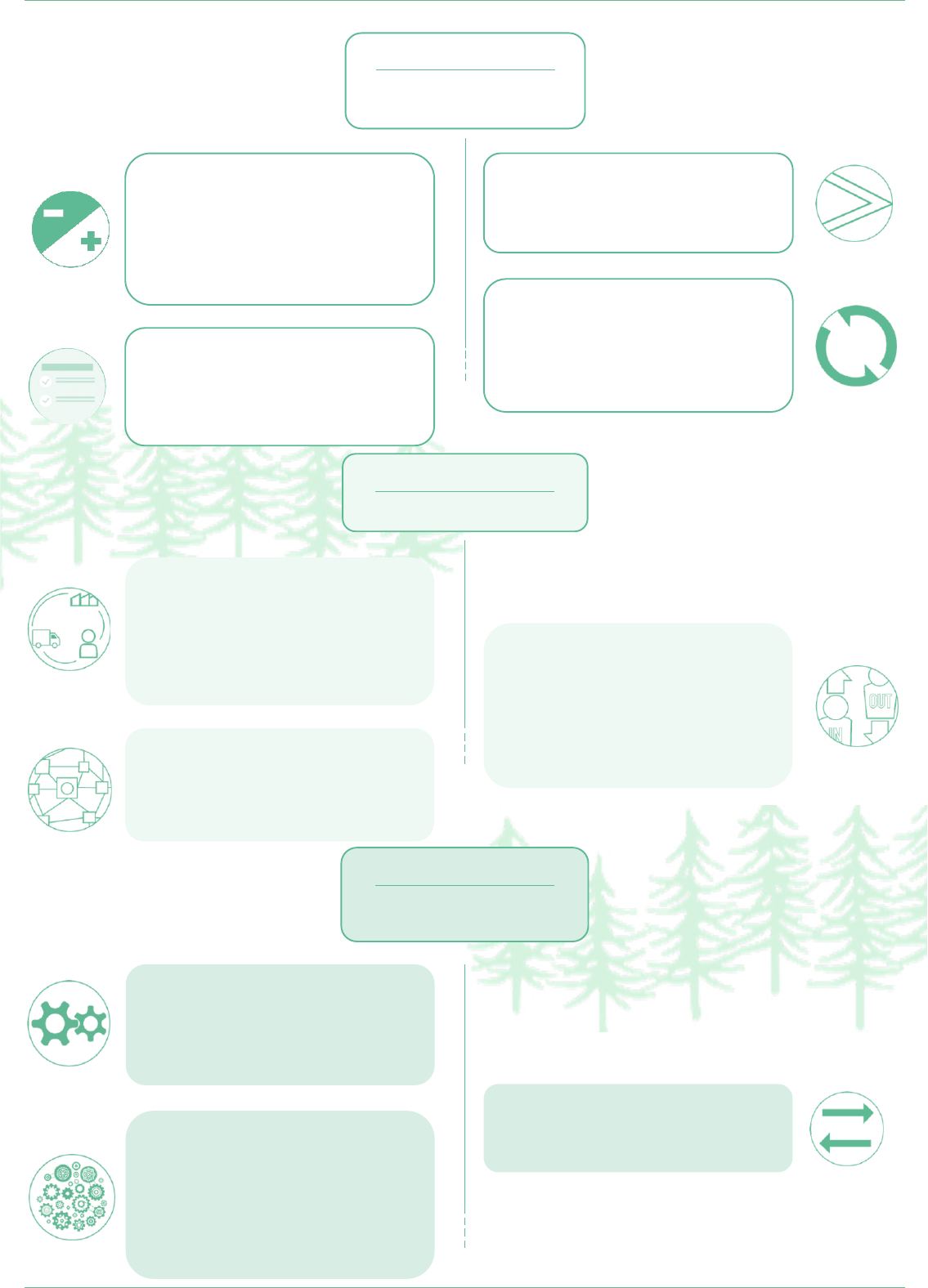
• Agriculture and mining are the sectors with the
highest direct impacts and dependencies on the
Amazon
• Increased tree mortality, deforestation, pollution,
and anthropogenic global warming could push the
Amazon past critical thresholds
• The Amazon is home for over 30 million people
and hosts 40% of the world’s remaining rainforest
• Offering a wide range of provisioning services
(timber, food, freshwater), regulation (including
for climate), cultural and supporting services
• Economic actors primarily exert negative impacts
on the Amazon via land use change
(deforestation), pollution and climate change
• 26% of the Amazon is already showing evidence of
physical risks (deforestation and degradation)
• Legislation, regulation and shifting public sentiment
towards preservation of the Amazon imply an
increase in transition risks
• Climate change has increased aridity and fires in
the Amazon while deforestation has changed the
Amazon into a source of carbon emissions
• Mitigation efforts that rely on mining for transition
critical minerals, advanced biofuel production and
construction of dams can increase nature
degradation
•
Phase 1
Identify sources of physical
and transition risks
Phase 3
Assess risk to, from and within
the financial system
• The combination of interconnectedness between
FIs and concentrated exposition to the
agricultural sector could trigger risk propagation
• Contagion could occur because of divestment
threats linked to physical risks, or via litigation
risks
• The decrease in investment linked to Amazon
degradation could create feedback loops that
would be detrimental to agricultural productivity
• Economic risks can transmit via traditional risk
categories for financial institutions (business risk,
decrease in credit worthiness, operational risk
linked to potential litigation, market risk linked to
repricing and volatility for firms impacted by forest
degradation)
•
Phase 2
Assess economic risks
1. Current exposures
3. Forward-looking view
Current exposures
Current exposures
4. Climate-nature nexus
2. Priorities
1. Value Chains
Current exposures
2. Micro-macro interaction
1. Transmissions
2. Systemic dimension
• At the macro level, deforestation could induce an
increase in productivity losses and decreases in
employment levels
• Macro level deterioration could result in feedback
loops at the micro level, ie. via impact on the price
of housing or consumer goods
•
• The vulnerability of economic actors depends on
their ability to adapt
• Substitution options for the agricultural, energy
and transportation sectors include a switch to
agroforestry, advanced technologies, and
transition towards alternative sources of power
• Substitution possibilities are uncertain and
become more limited or even chronically
impaired as the size of the hazard increases.
3. Vulnerability and substitution
• The financial sector finances activities that
contribute to the degradation of the Amazon, eg.
beef or soy bean, thereby amplifying the physical
risks to which they or other actors are exposed
3. Endogenous risks
• Agriculture and mining are particularly affected
• Regional economic effects of degradation -eg.
supply constraints- could affect global output and
prices
• Global dependency on commodities produced in
the Amazon can be disrupted with policy
responses, (eg. banning of non-deforestation-free
products), resulting in transition risk
•

NGFS REPORT
25
Forests Illustrative Case: The Amazon Rainforest
Tropical rainforests are both ecologically and economically
important. To illustrate, it is estimated that the net
benefit to the world economy of a 50% reduction of
tropical forest deforestation and degradation is as much
as USD 3.7 trillion
75
. One particularly important tropical
rainforest is the Amazon Rainforest (the “Amazon”) that
spans over nine jurisdictions in South America. It hosts 40%
of the world’s remaining rainforest, 25% of its terrestrial
biodiversity and more sh species than any other river
system
76
. For each of these nine jurisdictions, the Amazon is
integral to the health of the economy and local communities.
It is estimated that over 30 million people depend
directly or indirectly on the Amazon for their wellbeing
77
.
The Amazon also exerts a global impact via its inuence
on the global carbon cycle, hydrological systems and as a
habitat for species. For instance, the Amazon is found to
act as ‘wind brake’ reducing the occurrence of hurricanes
and anomalous weather patterns across South America.
By pumping moisture into the air, it also regulates
precipitation patterns far outside the Amazon region
78
.
By going through the phases in the risk assessment
framework, the following sections illustrate how the
degradation of the Amazon could result in economic and
nancial risks.
Summary of phase 1
This phase identies the key sources of risks that stem from
the degradation of the Amazon. It highlights the wide
range of key ecosystem services provided by the Amazon on
a local and global level, ranging from cultural signicance
for local populations, the provision of food as well as
global climate regulation. The analysis draws attention
to deforestation and pollution as two key drivers of the
Amazon’s degradation and agriculture, forestry and mining
as high impact sectors. Nature-related nancial risks are
likely to increase due to climate change and emerging
policies aimed at halting deforestation. The construction of
dams, farming of biofuels, and mining of minerals needed
for the energy transition are some of the key activities
that could be positive from a climate perspective but also
contribute to the degradation of the Amazon.
Phase 1: Identifying sources
of nature-related nancial risk
Q1.1 Current exposures
The global economy and the nancial system depend on
a number of ecosystem services provided by the Amazon.
For instance, the Amazon regulates freshwater and soil
quality which is critical to the agricultural sector. The
Amazon also provides timber, minerals and biodiversity
conservation that is used in forestry, mining, and
pharmaceutical research. Globally, the Amazon plays
a critical systemic role in climate regulation and carbon
sequestration. Its dieback is associated with crossing climate
tipping points. Key ecosystem services provided by the
Amazon include the below (for further information on
impacts and dependencies on forests, see also Annex 4):
•
Provisioning services: Supply of timber, food and
freshwater (ground and surface).
75 Hope, C. & Castilla-Rubio, J. C. (2008) A first cost benefit analysis of action to reduce deforestation. Working paper series, Cambridge Jude
Business School.
76 Why the Amazon’s Biodiversity is Critical for the Globe: An Interview with Thomas Lovejoy, The World Bank, May 2019.
77 Johnson, J. A., et al. (2021) The Economic Case for Nature: A Global Earth-Economy Model to Assess Development Policy Pathways. The WWF estimates
the number of people reliant on the Amazon at over 40 million (Amazon, WWF, webpage retrieved from: https://www.worldwildlife.org).
78 Vourlitis, G. L., et al. (2002) Seasonal variations in the evapotranspiration of a transitional tropical forest of Mato Grosso, Brazil. Water Resources Research.

NGFS REPORT
26
• Regulating services: Climate regulation, air and water
filtration, biodiversity conservation (including for
pharmaceutical research and development) as well as
soil quality regulation (including for local agriculture).
•
Cultural services: Cultural and spiritual signicance for
local populations, recreational opportunities and tourism.
•
Supporting services: Soil and sediment retention, ood
and storm protection and nutrient cycling
79
.
Several economic actors exert negative impacts on the
Amazon via land use change (deforestation), pollution
and climate change
80
:
•
Deforestation is one of the biggest threats to the Amazon
with over 20% of the Amazon deforested (a measurement
stemming from 2022 compared to pre-1970 levels).
38% of the remaining forest is considered degraded
81
.
Agriculture, forestry, and mining are the key sectors
responsible for deforestation activities. Other drivers
of degradation in the Amazon include illegal logging,
land grabbing, cattle ranching
82
, urbanisation,
human settlement and associated infrastructure
development, forest res (human-induced or natural
83
)
and climate change
84
.
•
Pollution is another key driver of the Amazon’s degradation.
Mining particularly contributes to pollution, notably via
the use of mercury
85
. Globally, it has been estimated that
approximately 35% of the total release of mercury from
artisanal and small scale gold mining is directly emitted
into the atmosphere, while the remainder is released into
the water
86
. Forest res, agricultural burning and industrial
activities also contribute to harmful levels of pollution
in the Amazon
87
. These particles are detrimental to the
health of animals and local populations
88
.
To illustrate the size of high impact activities, ve of the
jurisdictions in the Amazon region (Brazil, Columbia,
Ecuador, Bolivia and Peru) obtain 70% of their gross
national product (GNP) from agribusiness, hydropower and
heavy industry
89
.
Q1.2 Priorities
Agriculture and mining rank as the sectors with highest
direct impacts and dependencies on the Amazon.
Large scale agriculture and cattle raising has the highest
direct impacts and direct dependencies
90
. Agriculture is
directly dependent on the provision of land and healthy
soil for growing crops and grazing livestock. Indirectly,
the Amazon provides a habitat for key pollinators which
agricultural practices rely on. Crop production dependent
on animal pollination has increased in the Amazon by
300% over the past 50 years
91
. Due to the large scale of
agricultural operations in the region, the impact of the
sector’s operations on the Amazon is also large. In 2020,
more than 235,000 square kilometres were used for crop
production in the Amazon
92
. Since the 1960s, the cattle herd
of the Amazon region has increased from 5 million to more
than 70-80 million heads and 80% of deforested areas have
been covered by pastures (approximately 900,000 km
2
)
93
.
Total deforestation and conversion of native vegetation
across Brazil increased from 1.6 million hectares in 2018
to 1.83 million hectares in 2020, making the expansion of
pasture for cattle farming and land speculation the largest
direct driver of deforestation and conversion
94
. The use
of agrochemicals from the plantations contribute to this
impact by contaminating the soil.
79 Mechanized Agriculture, WWF, webpage retrieved from: https://wwf.panda.org/.
80 Not all economic actors exert such negative impacts. For instance, many indigenous peoples have traditionally lived in harmony with the Amazon
rainforest, often practicing sustainable land management techniques that support their communities without causing deforestation.
81 Camargo, S. Invisible destruction: 38% of remaining Amazon forest already degraded. Mongabay, February 2023.
82 Deforestation Fronts, Drivers and Responses in a Changing World, WWF, 2021.
83 Pristine rainforest does not burn easily due to its humidity. Usually some level of deforestation or degradation is needed for res to take hold.
84 Lapola, D. M., et al. (2023) The drivers and impacts of Amazon forest degradation, Science.
85 Crespo-Lopez, M. E., et al. (2023) Mercury in the Amazon: The danger of a single story, Ecotoxicology and Environmental Safety.
86 Telmer, K. H. & Veiga, M. M. (2009) World emissions of mercury from artisanal and small scale gold mining, Mercury Fate and Transport in the Global
Atmosphere.
87 Fine particulate matteris dened as particles that are 2.5 microns or less in diameter.
88 Breathless in the Amazon: How PM2.5 Pollution is Harming Wildlife in Brazil’s Rainforest, AQI, March 2023.
89 Human security impacts of crossing the Amazon rainforest tipping point, GermanWatch, February 2023.
90 One can prioritize sectors with high impacts and high dependencies by making use of the WWF Biodiversity Risk Filter (BRF)
(Biodiversity Risk Filter, WWF). The WWF BRF proves prioritization tools based on the sector materiality (using the TNFD approach) and location.
91 The assessment report on Pollinators, Pollination and food production, IPBES, 2016.
92 Area planted or destined to harvest in the Legal Amazon in Brazil from 2000 to 2020, Statista, August 2023.
93 Veiga, J. B., et al. (2003) Cattle Ranching In The Amazon Rainforest, XII World Forestry Congress.
94 Reis T., Ermgassen, E. Z., and Pereira, O,. Brazilian beef exports and deforestation, Trase, November 2023.

NGFS REPORT
27
In addition to agriculture, mining has very high impacts
and dependencies on the Amazon. The Amazon contains
many minerals such as iron, copper, bauxite, nickel,
tin, zinc, manganese and gold. The mining of these
minerals exerts a large negative impact on the Amazon
via deforestation and via polluted water with run-off from
the mine affecting local ecosystems and communities
95
.
To illustrate, the increase in the price of gold over the
last decade has led to a new rush to mine in the Amazon.
In Peru alone, at least 64,000 acres has been deforested
for gold mining
96
. Mining activities in the Amazon may
increase as a result of increased demand for minerals
that are critical to energy transition. It is estimated that
the mining of minerals such aslithium, cobalt, nickel and
graphite that areneeded for batteries could quadruple
by 2040
97
.
Q1.3 Forward looking view
The ‘Amazon dieback’ is a tipping point in the Earth’s climate
system. When crossed, physical risks may increase rapidly
and give rise to acute risks. This ‘Amazon dieback’ refers to
a significant reduction in the number of trees in the
rainforest which disrupts its ability to sustain itself
by transporting moisture. As more trees die due to
water scarcity, the Amazon gradually transitions into
a drier ecosystem, eventually transforming into a dry
savannah. Increased tree mortality, deforestation and
anthropogenic global warming could push the Amazon
past these critical thresholds beyond which feedback
loops propel abrupt and substantial forest loss
98
.
The exact timeline in which these non-linear impacts
could occur is deeply uncertain. However, with 26% of
the Amazon already showing evidence of deforestation
and degradation, and assuming recent trends continue,
tipping points in the Amazon could already be crossed
in the short to medium term
99
.
A sudden collapse of the Amazon would non-linearly
increase physical risks, forcing sectors with direct
dependencies on ecosystem services from the Amazon
to abruptly shift their operations. But gradual and acute
transformations of the Amazon also affects its role as
regulator of both regional and global climate and
hydrological cycles
100
. Future changes to precipitation
patterns and rainfall throughout North and South
America as a result of the Amazon’s degradation may
impact water dependent sectors in these regions such
as agriculture. The loss of resilience also has significant
global implications for biodiversity, carbon storage
and climate change and may result in changes to
global weather patterns
101
. Those changes can have
compounding effects on other ecosystems across
the globe.
Legislation and regulation to preserve Amazon continue
to emerge, increasing transition risks for industries
with impacts and dependencies on the Amazon.
In 2021, at the COP26 World Leaders Summit ‘Action on
Forests and Land Use’, over 130 leaders representing
more than 90% of the world’s forests committed in
theGlasgow Leaders’ Declaration on Forests and Land
Use to prevent forest loss and implement binding targets
and clearmeasurements by 2030
102
. In addition, target3
of the Global Kunming Biodiversity Framework (“GBF”)
seeks to, among other things, conserve 30% of land by
2030 which could include lands within the Amazon
103
.
Rules stemming from this agreement may pose potential
transition risk. Furthermore, starting from the end
of 2024, the EU Deforestation Regulation will prohibit
placement of relevant products on the EU market
unless they are ‘deforestation-free’
104
. Local legislation
in the Amazon may also become more stringent for
firms whose activities negatively impact the Amazon.
In 2020, Brazil’s National Monetary Council required land
95 Albert, J.S., et al. (2023) Human impacts outpace natural processes in the Amazon, Science.
96 Sonter, L. J., et al. (2017) Mining drives extensive deforestation in the Brazilian Amazon, Nature Connections.
97 The Role of Critical Minerals in Clean Energy Transitions, International Energy Agency, March 2022.
98 Boulton, C. A., Lenton, T. M., & Boers, N. (2022) Pronounced loss of Amazon rainforest resilience since the early 2000s, Nature Climate Change.
99 Praeli, Y. S., The Amazon will reach tipping point if current trend of deforestation continues, Mongabay, October 2022. For more information on the
Amazon tipping point, see Lovejoy, T. E. & Nobre, C. (2019) Amazon tipping point: Last change for action, Science Advances.
100 Amazon Assessment Report 2021, Chapter 7 Biogeophysical Cycles: Water Recycling, Climate Regulation, The Science Panel for the Amazon, 2021.
101 Boulton, C. A., Lenton, T. M., and Boers, N., (2022) Pronounced loss of Amazon rainforest resilience since the early 2000s, Nature Climate Change;
Aruajo, R. and Mourão, J. (2023) The Amazon Domino Eect: How Deforestation Can Trigger Widespread Degradation, The Climate Policy Initiative.
102 COP26: Pivotal Progress Made on Sustainable Forest Management Conservation, United Nations Climate Change, November 2021.
103 Kunming-Montreal Global biodiversity framework (CBD/COP/DEC/15/4), December 2022.
104 Green Deal: New law to ght global deforestation and forest degradation driven by EU production and consumption enters into force, European
Commission, June 2023.

NGFS REPORT
28
and environmental regularisation as a prerequisite for
granting credit
105
.
Shifting public sentiment and pressures from consumers and
investors can also be a source of transition risk. There has been
increased pressure for companies and nancial institutions to
manage and disclosure risks associated with deforestation.
To illustrate, over a thousand companies disclosed on their
management of deforestation globally in 2022, representing
a 300% increase relative to 2017
106
. Such pressure may also
translate into increased litigation risk, which is considered
a subset of transition and physical risk in the Framework.
Q1.4 Climate-nature nexus
Risks related to climate change are closely interconnected
with a broader set of nature-related financial risks
that stem from the degradation of the Amazon.
Climate change is a key driver amplifying the degradation
of the Amazon. However, deforestation in the Amazon
also signicantly contributes to the release of greenhouse
gases and reduces carbon sequestration. Protection of the
Amazon and sustainable reforestation could therefore
contribute to a reduction of climate-related nancial
risks and broader nature-related nancial risks at the
Connection Description
Climate change as a driver of nature risk • Globally, forest degradation has increase as a result of forest res
1
. Specically,climate
change has increased the aridity of forest during the re season due to increases in
temperatures and drier conditions
2
. Recent research shows that since 2001, between
40,000 and 73,400 square miles of the Amazon have been impacted by res
3
.
Nature degradation as a driver of climate risk • Deforestation contributes to the emission of greenhouse gases. Globally, this
makes up about 10% of all human-induced GHG emissions
4
. Deforestation has
changed the Amazon from a carbon sink to a source of carbon emissions
5
.
Over the past 20 years, the Brazilian Amazon has emitted 13% more CO
2
than
it has absorbed
6
.
• Land use change, including via agriculture, reduces the ability of the soil in the
Amazon to store carbon.
• Wildres in the Amazon contributed to the highest carbon emissions in 2022
compared to the past 20 years
7
.
Climate change mitigation and adaptation
as a potential driver of nature risk
• Clean energy technologies rely on critical minerals that are environmentally costly
to mine. Mining activities in the Amazon damage natural resources by emitting
greenhouse gas emissions, pollutants and contributing to deforestation.
• Advanced biofuel production (notably soy, maize, and sugar cane) increases
pressure on nature via land use change
8
.
• Construction of dams for hydroelectric projects disturbs river connectivity
and the health of wildlife populations in or around those rivers
9
.
Nature as a solution to decrease climate risk • The Amazon can contribute to climate change mitigation by acting as carbon
sinks. The ora contained in the Amazon region absorb 1.5 bn tonnes of CO
2
a year,
equivalent to 4% of global emissions from fossil fuels.
1 Tyukavina, A., et al. (2022) Global Trends of Forest Loss due to Fire From 2001 to 2019, Remote Sensing Time Series Analysis.
2 Wildre climate connection, National Oceanic and Atmospheric Administration, July 2023.
3 Feng, X., et al. (2021) How deregulation, drought and increasing re impact Amazonian biodiversity, Nature.
4 Emissions Gap Report 2018, United Nations Environment Programme, November 2018.
5 The Brazilian Amazon has been a net carbon emitter since 2016, The Economist, May 2022.
6 Gatti, L. V., et al. (2021). Amazonia as a carbon source linked to deforestation and climate change. Nature.
7 Wildres: Amazonas records highest emissions in 20 years, The Copernicus Atmosphere Monitoring Service, October 2022.
8 Killeen, T. J., Biofuels in the Pan Amazon, Mongabay, November 2023.
9 Zanon, S., Dam-building spree pushes Amazon Basin’s aquatic life closer to extinction, Mongabay, June 2023.
105 Estimates indicate that these measures aected economic actors operating in the region. The total deforested area was approximately 50-60%
smaller than it would have been without these regulatory changes. See Assunção, J., et al. (2020) The eect of rural credit on deforestation:
Evidence from the Brazilian Amazon. The Economic Journal.
106 The Forest Transition: from Risk to Resilience, Global Forests Report 2023, CDP, July 2023.

NGFS REPORT
29
same time. But trade-os can occur. Certain solutions
to combat climate change can amplify the degradation
of the Amazon and potentially increase nature-related
nancial risks. A notable example includes the mining of
minerals critical for the energy transition. The table above
provides further detail on these connections.
Phase 2: Assess economic risks
Q2.1 Value chains
Economic risks from degradation of the Amazon can occur
both domestically and abroad. As the Amazon spans
multiple jurisdictions, several economies will experience
direct eects in dependent sectors like agriculture and
mining. These direct eects can transfer across borders and
to other sectors through value chains, thereby resulting in
indirect economic eects. For example, large quantities
Summary of phase 2
This phase highlights how some of the economic risks
related to the degradation of the Amazon can be identied.
The assessment illustrates how agriculture and mining
are particularly aected but also households due to the
important role the Amazon plays in the provision of food
and water for local communities. In the assessment, it
is illustrated how macroeconomic deterioration might
occur both regionally and globally due to the constraint
production and supply of commodities from the Amazon.
Geographical and technological substitutions possibilities
may exist to replace ecosystem services that are lost or
reduced. These substitution options are, however, likely to
be very limited because of factors such as the importance of
the Amazon to global climate regulation, the degradation
of tropical forests elsewhere worldwide and the size of
shocks aecting the Amazon.
of commodities produced in the Amazon are exported to
China, Europe, the United States and other countries
107
.
Many of these commodities, such as soybeans, are used as
inputs for several other products including animal protein
feed, vegetable oil, and non-food uses in manufacturing
108
.
These eects are in addition to the implications that the
degradation of the Amazon could have on economies abroad
as a result of, among other things, global temperature rise
and changes in weather patterns (compounding eects
which are highlighted in Phase 1).
The NGFS Technical Document on Nature Scenarios
includes a case study on the potential direct and indirect
economic effects of an EU transition policy to ban
non-deforestation-free products. Using Multi-Regional
Input-Output (MRIO) tables, the case study estimates
that direct and indirect upstream eects would expose
all Brazilian sectors to a potential reduction in total output
of EUR 1.6 billion. The indirect downstream impact of such
a policy measure would expose EUR 960 million of EU
imports to this shock
109
.
Q2.2 Micro-macro interaction
Through value chains, regional direct an indirect economic
eects could aect macroeconomic variables such as global
output and prices
110
. Jurisdictions in the Amazon operate as
a global supplier of key agricultural products. To illustrate,
Brazil is as number one producer of soybeans worldwide
with a production of 120 million metric tonnes of soybeans
each year
111
. Disruptions at the beginning of the supply
chain – such as a decline in the production of soybeans –
may consequently result in uctuations of commodity prices
on a global level. Those uctuations could also increase
the price for products made from soybeans (animal feed,
food, oil, biodiesel etc.).
107 Butler R. A., The Amazon Rainforest: The World’s Largest Rainforest, Mongabay, June 2020.
108 Ritchie, H., Is our appetite for soy driving deforestation in the Amazon, Our World In Data, February 2021.
109 For more details, see the NGFS Technical Document – Recommendations toward the development of scenarios for assessing nature-related economic
and nancial risks, NGFS, December 2023.
110 Khan, Y., Commodities Come Under Pressure as Macro Headwinds Build, The Wall Street Journal, October 2023.
111 Marin, F. R., et al. (2022) Protecting the Amazon Forest and reducing global warming via agricultural intensication, Nature Sustainability.

NGFS REPORT
30
Macroeconomic deterioration might also occur via a
loss of productivity and decreases in employment levels.
For example, forest degradation in the Amazon is expected
to decrease agricultural productivity. Productivity losses
and associated revenues under an adverse deforestation
scenario could amount to USD 5.6 billion for soy and USD
180.8 billion for beef by 2050 in net present values
112
.
Around 10% of Brazil’s employment is in the agriculture
sector, highlighting the potential for job losses
113
.
Eects on productivity might also occur via incidences of
extreme drought in the Amazon. These have disrupted
the transportation of products along the Amazon River
and disrupted electricity transmission
114
. Moreover, the
degradation of the Amazon impacts the provision of food
and clean water for local and indigenous people, aecting
their health and productivity
115
.
Deterioration at the macroeconomic level could result
in feedback loops to the microeconomic level, further
impacting households and businesses. For example,
timber supply may become constrained by consumer
demand to source timber from sustainable, certiable
supplies and increased deforestation regulation. This supply
constraint can occur simultaneously with an increase in
timber consumption due to a rising demand for timber in
construction, manufacturing and energy production
116
.
A resulting increase in timber prices will subsequently
impact the price of housing and certain consumer goods,
aecting economic actors at the micro level.
Q2.3 Vulnerability, adaptation
and substitution
The vulnerability of at-risk economic actors will largely
depend on their ability to adapt. For agriculture, energy
and transportation sectors, technological and geographical
substitution possibilities may be able to mitigate some of
the eects of Amazon degradation and related policies.
However, the ability to do so remains subject to high levels of
uncertainty. Within the Amazon, some agricultural producers
begin to pivot towards more sustainable methods such as
agroforestry (a method of growing food and other goods
by mimicking natural ecosystems) to rehabilitate parcels of
degraded agricultural land
117
. Furthermore, the development
and application of new technologies in agriculture is opening
up possibilities for new production processes. Technologies
are also being developed to increase livestock productivity
without increasing deforestation
118
. The transition of the
energy grid towards renewable electric power, along with
the adoption of second and third-generation biofuels that
do not depend on edible plants as their feedstock, may
enhance the resilience of the energy grid. Further, waterway
transport with hybrid fossil fuel-electric engines could reduce
the need to clear forest for new roads
119
.
112 Leite-Filho, A. T., et al. (2021) Deforestation reduces rainfall and agricultural revenues in the Brazilian Amazon, Nature Communications.
113 Data Bank, World Development Indicators, The World Bank. For the data mentioned, the series selected was Employment in agriculture (% of total
employment) (modelled ILO estimate).
114 For example, in 2023, low river ows from extreme drought resulted in the suspension of a major power transmission line. Due to this, many
electrical power plants were unable to connect to the national interconnected system (SIN), thereby disrupting business operations. Low river
levels also create problems for transporting the products of small farmers who live on the banks of the large rivers.
115 New Economy for the Brazilian Amazon, World Resources Institute, June 2023.
116 Global forest sector outlook 2050, Assessing future demand and sources of timber for a sustainable economy. Food and Agriculture Organization of
the United Nations, 2022.
117 Nugent, C. Farming Destroys Brazil’s Rain Forests. It could Also Save Them. Time, January 2023.
118 Filho, F. L. L., Bragança, A. and Assunção, J., Increasing Cattle Productivity in the Amazon Requires New Technologies, Climate Policy Initiative, June 2022.
119 New Economy for the Brazilian Amazon, World Resources Institute, June 2023.

NGFS REPORT
31
The substitution possibilities for dependent sectors become
more limited or even chronically impaired as the size of
the shock or hazard increases. Recent studies have shown
that by compounded climatological eects, the rainforest
is losing resilience. This can increase the frequency or
size of shocks
120
. As the forest continues to degrade, the
effectiveness of substitution methods may therefore
decline, and risks may compound via complementary
and interconnected ecosystem services
121
. To illustrate,
farmers may not be able to adapt quickly enough to
mitigate impacts from severe drought shocks. This was
visible between June 2021 and June 2022 when a severe
drought decreased Brazil’s national agribusiness earnings
by5.5%compared to the previous year
122
. This drought also
resulted in signicant losses to the insurance industry
123
.
The extent to which operations further down the value
chain can substitute geographically might also be restricted
by the widespread global degradation of tropical forests
and an increase of policy action to protect these vulnerable
ecosystems. Southeast Asia is home to nearly 15% of the
world’s tropical forests and is losing at least 1.2% of its
forests annually due to palm oil production, logging, and
agriculture
124
. Similarly, according to the UN Food and
Agriculture Organization, nearly 4 million hectares of African
tropical forests are lost each year
125
. These developments
restrict the ability to rely on the necessary ecosystem
services in other locations.
Phase 3: Assess risk to, from and within
the nancial system
Summary of phase 3
This phase illustrates the transmission of economic risks
stemming from the Amazon’s degradation to the nancial
sector. The assessment points towards some of the traditional
risks categories that may be aected as a result of, among
other things: (i) heightened operational risks due to natural
hazards; (ii) increased business risks as degraded soil quality
prevents the cultivation of certain crops; and (iii) market risks
due to uctuations in commodity prices. The assessment
also illustrates how systemic risks may occur, for instance as
a result of concentrated exposures to high-impact sectors.
By nancing high impact activities, such as beef and soy
production, the nancial sector aects the degradation of
the Amazon and the risks that stem from this.
Q3.1 Transmission
The economic risks stemming from the degradation
of the Amazon can transmit to the nancial system via
traditional nancial risk categories. For example, recent
research by the World Bank explores how banks can be
exposed to the loss of biodiversity through their lending
activities. It shows that 46% of Brazilian banks’ corporate
loan portfolio is concentrated in sectors dependent on
ecosystem services owing from the Amazon. Furthermore,
losses from ecosystem service collapse could translate to a
9 percentage point increase in corporate non-performing
loans
126
. The table below provides examples of how the
Amazon’s degradation could aect strategic/business
model, credit, market and operational risks.
120 Most Protected areas in Tridom vulnerable to climate change, WWF, May 2020.
121 For example, soil fertility and nutrient cycling are closely interconnected. Forests contribute to soil fertility by cycling nutrients through the
decomposition of organic matter. This nutrient cycling supports plant growth and productivity, which in turn enhances the health and resilience
of forest ecosystems.
122 GDP grows 1.2% in the 2
nd
quarter of 2022, Instituto Brasileiro de Geograa e Estatistica, September 2022.
123 Caswell, G. Drought poses increasing risk for Brazil’s nancial system, Green Central Banking, December 2022.
124 Felbab-Brown, V., The Jagged Edge: Illegal Logging in Southeast Asia, Brookings, April 2013.
125 Boosting transparency of forest data, Deforestation continues globally, if at a slower pace. Food and Agriculture of the United Nations, June 2020.
126 Calice, P., Kalan, F. D. & Miguel, F. (2021) Nature-Related Financial Risks in Brazil, The World Bank.
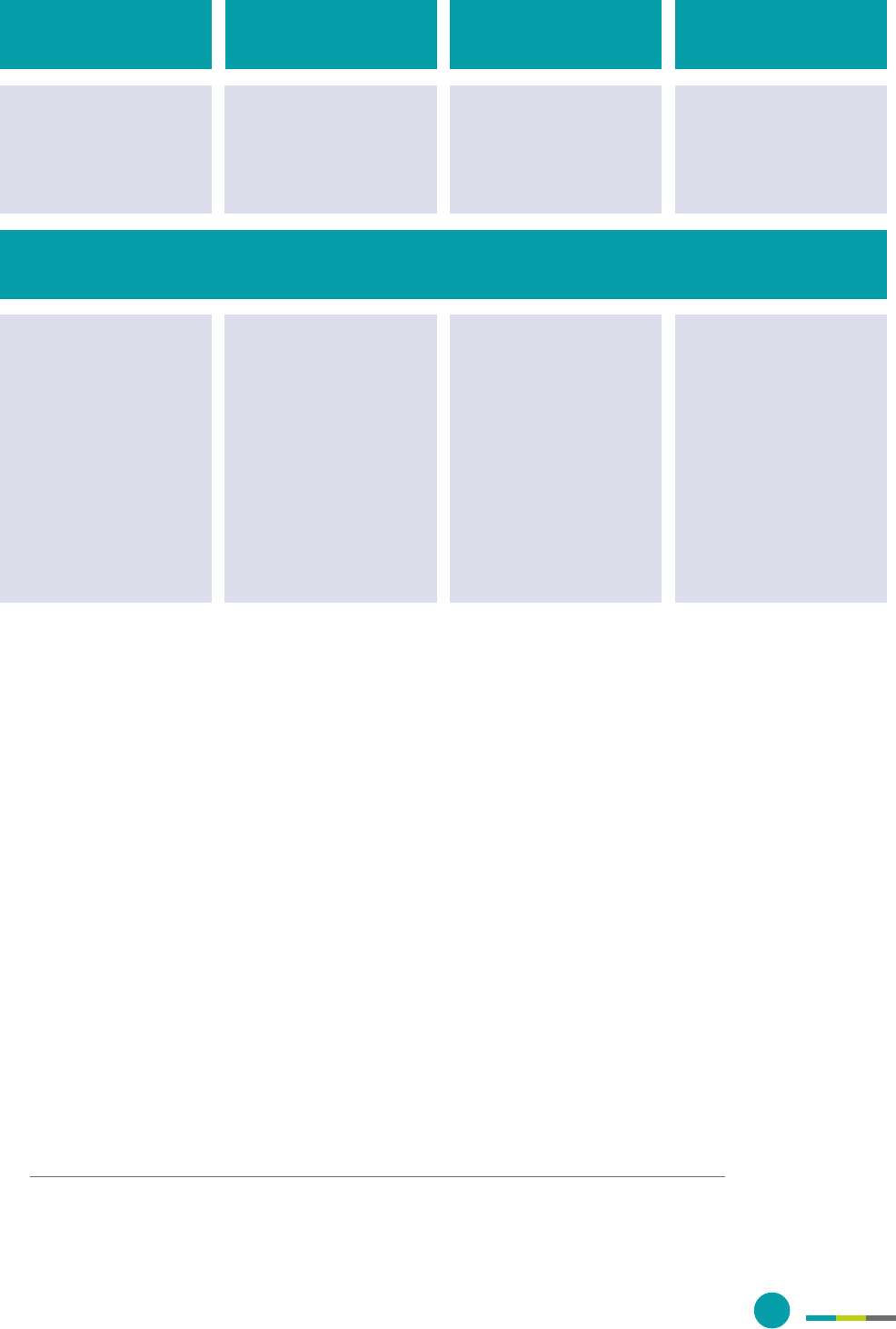
NGFS REPORT
32
Q3.2 Systemic dimension
The interconnectedness of nancial institutions and the
concentration of exposures to high-risk sectors can drive risk
propagation within the nancial system. If a few nancial
institutions experience severe stress from concentrated
exposures (e.g., to agriculture), then this could create the
re sale of assets that impacts the valuation of these assets
(which may cascade to other businesses in the value chain).
Any reactionary response in the event of stress could more
easily propagate risk across the nancial sectors if the
largest exposures to high-risk sectors are found in highly
connected nancial institutions
127
.
There may also be contagion within the nancial system
as actors respond to physical risk. For example, after
a number of major wildres in the Amazon in 2020, a group
of investors holding over USD 5 billion in investments
threatened to divest from Brazil if sustainability standards
were not met
128
. Such actions could change market
sentiment, triggering further divestments. Contagion might
also occur via litigation risks. Exposure to deforestation
activities in the Amazon can result in reputational damage
and increased regulatory action against nancial institutions
providing nancing for harmful activities. For example, nes
linked to the EU’s deforestation law can be as high as 4% of
company turnover in an EU Member State
129
. These nes
can be a source of risk in itself. But pre-emptive action by
investors could amplify risks for all rms that are potentially
exposed to such regulatory action.
Amazon degradation may lead to feedback loops between
the real economy and the nancial sector. For example,
if investors adjust their portfolios to compensate for
losses in the agricultural sector in the Amazon region, the
decrease in investment can create a negative feedback
loop where declining investment further diminishes
agricultural productivity.
Strategic and Business
Model Risk
Credit Risk
Market Risk Operational Risk
Examples
Eects on the availability
of high-quality land could
force producers to make
long term adjustments to
their business model.
Decrease in credit
worthiness of sectors
dependent on the forest
which suer from income
losses.
Concentrated nancial
stress to rms vulnerable
from forest degradation
leads to asset repricing
and market volatility.
An increase in the
frequency of natural
hazard events disrupts
business activity. Risk
increases as a result
of litigation.
Degraded soil quality decreases
productivity of agricultural land.
Cattle ranchers need to adopt
new technologies and
management practices to increase
pasture productivity.
Reduced agriculture
productivity aects the
incomes of debtors along
the supply chain. For FIs,
these clients may be unable
to continue to service debt
obligations in full and on time.
Severe stress from
concentrated agriculture
exposure could create the
re sale of assets to raise
liquidity, thus impacting
the valuation of
these assets.
Severe impacts to production
can drive market volatility.
Fluctuations in commodity
prices can transmit to FIs
which oer hedging
and trade nance products.
An increase in wildres in
the Brazilian Amazon
during high-deforestation
years disrupt mining
operations and
transportation routes.
Environmental and human
rights activist groups have
started to bring claims
against nancial institutions
for providing nancial services
to companies contributing
to Amazon deforestation.
127 A Supervisory Framework for Assessing Nature-related Financial Risks – Identifying and navigating biodiversity risks, OECD, 2023.
128 Spring, J. Exclusive: European investors threaten Brazil divestment over deforestation. Reuters, June 2020.
129 Parliament adopts new law to ght global deforestation, European Parliament News, April 2023.

NGFS REPORT
33
Q3.3 Endogenous risk
The nancial sector nances activities that contribute to
the degradation of the Amazon, thereby amplifying the
physical risks to which they or other actors are exposed
130
.
The Covid-19 global pandemic is a recent example of this
dynamic. Studies indicate that deforestation and land-use
conversion, largely driven by agricultural expansion,
increase the risk of zoonotic diseases such as Covid-19
131
. It
illustrates how nature-related risks can provide widespread
economic and nancial disruption, impacting the actors
that nance risk exacerbating activities
132
.
130 Pavoni., S, Banks can oer Amazon rainforest shelter from the storm, The Banker, March 2021.
131 Dobson, A. P., et al. (2020) Ecology and economics for pandemic prevention, Science.
132 Calice, P., Kalan, F. D., & Miguel, F. (2021) Nature-Related Financial Risks in Brazil, The World Bank.
133 Banking on Biodiversity collapse, Tracking the Banks and Investors Driving Tropical Forest Destruction, Forests and Finance, December 2023.
134 Banking Beyond Deforestation: How the banking industry can help halt and reverse deforestation, University of Cambridge Institute for Sustainability
Leadership, January 2021.
135 Domestic Banks Finance 74% of Brazilian Beef & Soy, Chain Reaction Research, December 2020.
136 Ashford, M. and Branford, S., Foreign capital powers Brazil’s meatpackers and helps deforest the Amazon, Mongabay.
137 Galaz, V., et al. (2018) Finance and the Earth system – Exploring the links between nancial actors and non-linear changes in the climate system, Global
Environmental Change.
Globally, the forest-risk commodity sectors drive the
majority of tropical deforestation. It is estimated that
USD 307 billion ows from larger nancial institutions
into forest-risk commodities
133
. Along commodity supply
chains, banks provide a variety of nance and nancial
services including term loans, trade nance and revolving
credit facilities, to bond and fund structuring, capital
raising, project nance and more
134
. Within the amazon
region, nancing provided to the beef and soy sectors in
Brazil totalled USD 100 billion from 2013 to April 2020
135
.
Although 74% of this total originated from domestic banks,
foreign nancial institutions also invested in beef, soy
and timber production that contributes to the Amazon’s
deforestation
136
. By nancing activities that contribute to
the degradation of forests, it is argued that large nancial
institutions also aect climate stability
137
.
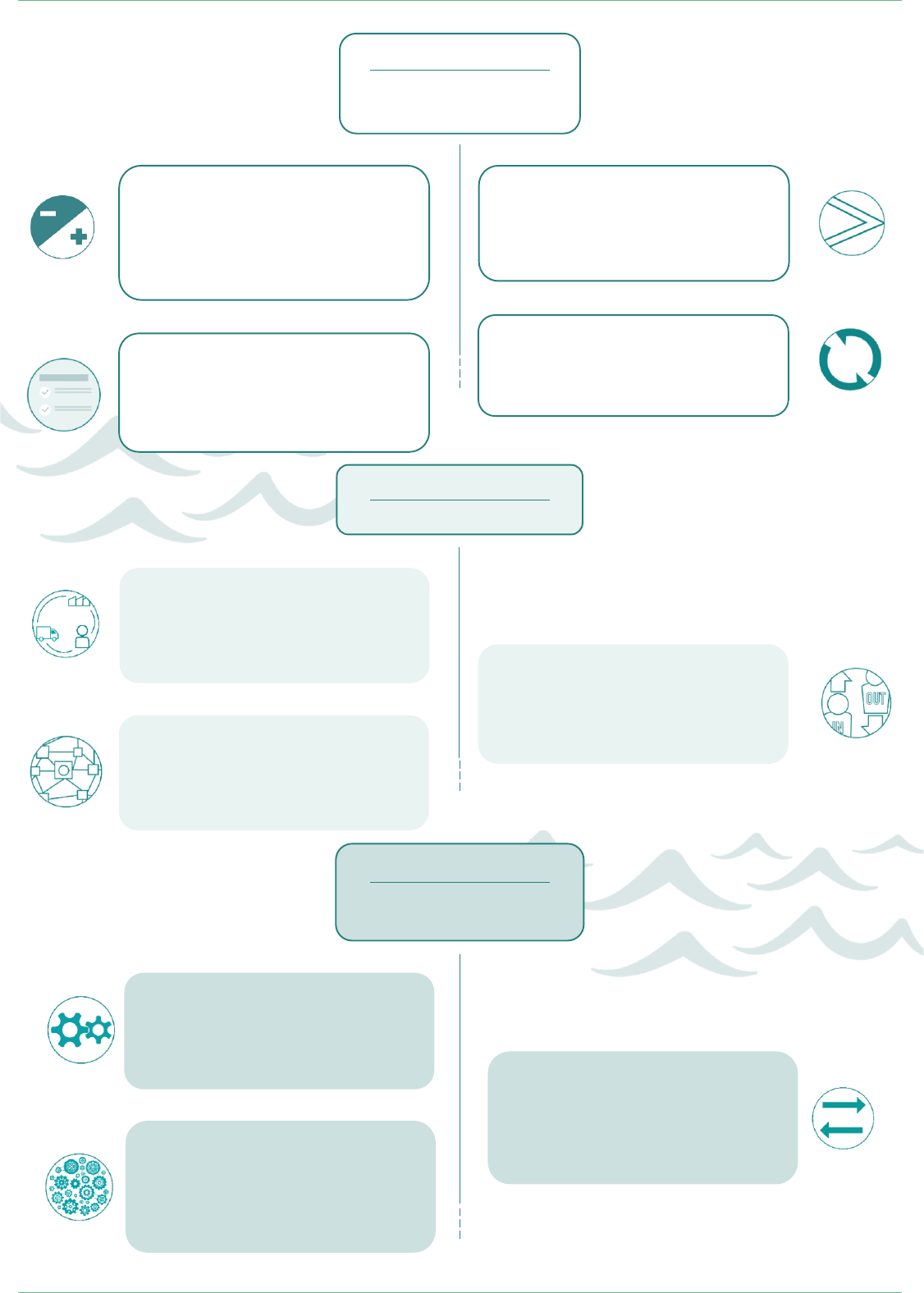
• Agricultural and hydroelectric power sectors have
significant impacts and dependencies on the Basin
• The Basin plays a role in the regional and global
hydrological cycle, influencing other ecosystems
connected to global water circulation and
alteration in rainfall patterns.
• Droughts in the area impact agriculture, energy
production, and employment and lead to increased
inequality and relocation of economic actors
• Alternatives to hydropower require substantial
investments in alternative energy sources creating
opportunities and costs
• At the micro level, reduced provision of freshwater
affects businesses and households notably through
disruptions in economic activities and rising prices
• At the sectoral/regional and macro level the impact
could materialize through a decline in value added,
socio-economic changes and employment loss
• Over 40 million people depend on the Colorado
River Basin for their drinking water
• The Basin provides a wide range of provisioning
(water and food), regulating (flood control),
cultural and supporting services
• Economic actors impact the area by risking its
water quality and quantity
• Escalating droughts may lead to physical risks, such
as water availability, electricity generation and
agricultural limitations
• Firms or assets are exposed to transition risks
when local governments change policies and legal
frameworks
• Climate change intensifies nature-related financial
risks and can negatively affect the quality and
quantity of freshwater
• Adaptation and mitigation efforts may
unintentionally worsen ecosystem degradation
Phase 1
Identify sources of physical
and transition risks
Phase 3
Assess risk to, from and within
the financial system
• Elevated water prices have the potential to impact
the financial systems and trigger feedback loops to
the real economy through increased commodity
price and cost pressures
• Contagion could occur via commodity markets
leading to speculation and market manipulation of
water prices
• Economic risks can transmit to traditional risk
categories for financial institutions (credit and
business model risk for businesses in water-
dependent sectors, market risk linked to price
volatility for water supply, legal risk linked to new
regulations)
•
Phase 2
Assess economic risks
1. Current exposures
3. Forward-looking view
4. Climate-nature nexus
2. Priorities
1. Value Chains
2. Micro-macro interaction
1. Transmissions
2. Systemic dimension
• Economic actors remain vulnerable given the
limited technological and geographical substitution
options for freshwater
• (Limited) technological substitution options include
changes in agricultural practices and a potential
switch to alternative sources of energy
3. Vulnerability and substitution
• Financial institutions’ funding of harmful economic
activities (e.g., water-intensive agriculture) will
aggravate financial risks
• Positive impacts are achievable via financing of
sustainable business practices and necessary
transitions (e.g., investments in sustainable
agricultural practices and technologies)
3. Endogenous risks

NGFS REPORT
35
Freshwater Illustrative Case: the Colorado River Basin
Freshwater ecosystems provide ecosystem services that
are critical to many economies. Despite covering less than
1% of the world’s total surface area, freshwater ecosystems
contain diverse lifeforms housing 10% of all known animals
and 40% of all known sh species
138
. At the same time,
freshwater ecosystems are habitats that have experienced
the sharpest biodiversity decline
139
.
One example of such a waterbody is the Colorado River
Basin (the “Colorado Basin”). Joined by over 25 signicant
tributaries (river branches), the Colorado Basin stretches
for more than 2,300 kilometres from the central Rocky
Mountains in the United States across the Colorado
Plateau to Lake Mead before turning south into Mexico
and emptying into the Gulf of California. Its waters sustain
ecosystems and foster biodiversity. In particular, the basin
provides roughly 40 million people across the United
States and Mexico with drinking water
140
. The Colorado
River, which is part of the Colorado Basin, constitutes a
vital water source for agriculture, hydropower generation,
municipalities and industries across the United States
and Mexico. By walking through the phases in the risk
assessment framework, the following sections illustrate
how the degradation of the Colorado Basin could result
in economic and nancial risks.
138 Freshwater Biodiversity, WWF, webpage retrieved from: https://wwf.panda.org/.
139 Living Planet Report 2022 Building A Nature-Positive Society, WWF, 2022.
140 A Breakthrough Deal to Keep the Colorado River From Going Dry, for Now, The New York Times, May 2023.
141 Kaval, P., (2011) Ecosystem Service Valuation of the Colorado River Basin: A Literature Review and Assessment of the Total Economic Value of the Colorado
River Basin, Conservation Gateway, The Nature Conservatory.
142 James, T., et al. (2014) The Economic Importance of the Colorado River to the Basin Region, The L. William Seidman Research Institute.
143 References include James, T., et al. (2014). The Economic Importance of the Colorado River to the Basin Region, A Report by the Arizona State University,
and Betley, E. C. (2015), How the West Was Watered: A Case Study of the Colorado River, Center for Biodiversity and Conservation, American Museum
of Natural History, USA.
Phase 1: Identifying sources
of nature-related nancial risk
Q1.1 Current exposures
The Colorado Basin provides a number of ecosystem services
on which economic actors depend. For instance, it provides
food, erosion control, natural disturbance regulation as well
as recreational services
141
. The Colorado River is also used
to generate hydroelectric power
142
. Key ecosystem services
currently provided by the Colorado Basin include the below
(for further information on impacts and dependencies on
water, see also Annex 4)
143
:
•
Provisioning services: Supply of food, provision of
freshwater for agricultural irrigation, provision of freshwater
for industrial processes and hydropower, provision of
drinking water in U.S. states and northern Mexico.
Summary of phase 1
This phase seeks to identify the key sources of risks that
stem from the degradation of the Colorado Basin. Using the
degradation of the Colorado Basin as starting point, this
analysis traces backward to identify ecosystem services and
sectors most aected by this physical hazard, leveraging
tools such as the ENCORE database and WWF risk lters.
It also highlights forward looking developments that could
amplify or reduce the relevance of these sources of risks.
Among other things, the analysis indicates a particular
dependency on freshwater provision for municipal,
industrial and commercial purposes and on cultural services
such as recreation in national parks. High impact and
dependency sectors include agriculture and utilities.

NGFS REPORT
36
• Regulating services: Water purication, ood control,
detoxication and natural disturbance regulation.
• Cultural services: Spiritual signicance, scenic beauty
and recreational opportunities, tourism and leisure
activities such as sport shing.
•
Supporting services: Habitat provision
144
, nutrient
cycling, water ltration and soil formation
145
.
Aside from dependencies, economic actors also impact
the Colorado Basin, primarily though water use and
pollution. Generally, impacts on freshwater ecosystems
can aect two dimensions: water quantity and water quality.
Key drivers of negative impacts include land use change
(e.g., infrastructure development), overexploitation of
water stemming from increased demand, pollution and
climate change. To illustrate, sectoral water withdrawals
and wastewater generation (particularly due to agricultural,
industrial and urban run-offs) can pollute water and
jeopardizes water quality
146
. Water shortages, whether due
to changing weather patterns or increased demand, amplify
these eects as they increase the concentration of pollutants.
Such water shortages also occur in the Colorado Basin.
To illustrate, the Basin has lost around 40 trillion litres of
water due to climate change between 2000 and 2021
147
.
This is the equivalent of roughly 33 years of cumulative
water usage for the entire population of the United States
148
.
Intensive water consumption in the mid-twentieth century
has dried the lower 160 km of the Colorado River, meaning
the river no longer reaches the sea except in years of heavy
run-o
149
.
144 Various endangered species use the Colorado River Delta as their habitat for all or part of the year. Betley, E. C. (2015) How the West Was Watered:
A Case Study of the Colorado River, Network of Conservation Educators and Practitioners, American Natural History Museum.
145 Soil formation is essential for the health of terrestrial ecosystems. Soil is formed by micro-organisms and physical processes that decompose organic
matter to small particles. Ecosystem Services, EcoShape.
146 DiFelice, M., The Root of the Colorado River Crisis: Corporate Water Abuse, Food & Water Watch, February 2023.
147 Bass, B., et al. (2023) Aridication of Colorado River Basin’s Snowpack Regions Has Driven Water Losses Despite Ameliorating Eects of Vegetation, Water
Resources Research.
148 The total U.S. water use was roughly 322 billion gallons (1.219 trillion liters) per year in 2015. See: Nastu, J., Why Overall Water Use Is Declining in US
Despite Population Growth, Environment + Energy Leader, January 2019. At this rate, it would take approximately 33 years of cumulative U.S. water
usage to reach the threshold of 40 trillion liters (own calculations).
149 James, T., et al. (2014) The Economic Importance of the Colorado River to the Basin Region, The L. William Seidman Research Institute.
150 Ibid.
151 l Shao, E. The Colorado River Is Shrinking. See What’s Using All the Water, The New York Times, May 2023.
152 Kaval, P. (2011) Ecosystem Service Valuation of the Colorado River Basin: A Literature Review and Assessment of the Total Economic Value of the Colorado
River Basin, Conservation Gateway, The Nature Conservatory.
153 Two Decades of Changes in Vegetation Greenness and Water Use in the Colorado River Delta, U.S. Department of the Interior, 2020.
Q1.2 Priorities
Based on the literature studied, the sectors with the
largest dependencies and impacts on the Colorado Basin
are the agricultural sector (irrigation and livestock) and
the hydroelectric power sector (dams along the river)
150
.
Of the 7.2 trillion litres of water consumed in a typical year
from the Colorado River in the United States, 79% goes to
agriculture, 12% to residential use, 4% to commercial and
industrial uses and 4% to thermoelectric power
151
.
The agriculture and hydroelectric power sectors interact
with ecosystems at local, regional and global levels.
Locally, the Colorado Basin is directly impacted by these
sectors, aecting the river, its tributaries, and surrounding
areas crucial for erosion control, natural disturbance
regulation and recreational services
152
. For instance,
urban ecosystems in seven U.S. states and two Mexican
states are connected to the Colorado River, highlighting
the direct impact of the loss of ecosystem services on
these local communities. Regionally, the eects extend to
broader ecosystems inuenced by the river’s water ow,
impacting wildlife and vegetation
153
. The Colorado Basin
also plays a role in the regional and global hydrological
cycle, inuencing other ecosystems that are aected by
alterations in rainfall patterns and other changes in global
water circulation.

NGFS REPORT
37
Q1.3 Forward looking view
The escalating frequency of droughts in the
Colorado Basin may increase physical risks over time.
Research predicts a climate-change induced decline
of between 19% to 31% in the Colorado River’s flow
by 2050 in a worst-case scenario
154
. The historically
low reservoir levels can contribute to decreased
electricity generation
155
, potentially increasing energy
prices. The reduced availability of water can also affect
water accessibility and prices. Notably, the Colorado
River supports around 5.5 million acres of irrigated
agriculture
156
. This sector would face risks when water
scarcity increases, potentially resulting in the use of
public funds to pay farmers to leave land fallow
157
.
It could also increase reliance on groundwater, which
is itself declining, or increase demands placed on
alternative sources of freshwater
158
. The rapid growth of
unconventional oil and gas explorations may contribute
to water scarcity as it can result in further contamination
of the water table. Hydraulically fractured wells are being
operated in regions of high to extremely high water
stress in Colorado, Texas, Oklahoma and California
159
.
Transition risks related to the Colorado Basin are emerging,
aecting rms or assets through changes in policy and
markets. The U.S. government is addressing persistent
ecological risks in the Colorado Basin resulting from
climate change and drought. This process, which aims
to protect hydropower, water storage and conservation,
could aect operating guidelines for the Glen Canyon and
154 Milly, P. C. D. and Dunne, K. A. (2020) Colorado River ow dwindles as warming-driven loss of reective snow energizes evaporation, Science.
155 Capehart, M. A. (2015) Drought Diminishes Hydropower Capacity in Western U.S., The University of Arizona Water Resources Research Centre.
156 Colorado River Basin Water Supply and Demand Study Executive Summary, U.S. Department of the Interior, Bureau of Reclamation, 2012.
157 Bittle, J. At last, states reach a Colorado River deal: Pay farmers not to farm, Grist, May 2023.
158 Naishadham, S. EXPLAINER: How cities in the West have water amid drought, AP News, May 2022.
159 Hydraulic Fracturing & Water Stress: Water Demand by the Numbers, Ceres, February 2016.
160 Interior Department Announces Next Steps to Protect the Stability and Sustainability of Colorado River Basin, U.S. Department of the Interior, April 2023.
161 Ibid.
162 Biden-Harris Administration Announces Historic Consensus System Conservation Proposal to Protect the Colorado River Basin, U.S. Department of the
Interior, May 2023; Trotta, D., and Brooks, B., Western states reach ‘historic’ deal to help save Colorado River, Reuters, May 2023.
163 Colorado River, Water Education Foundation; Tidwell, V. C., Malczynski, L. A., & Sun, A. C. T. (2011) Biofuel impacts on water, U.S. Department of Energy
Oce of Scientic and Technical Information.
Hoover Dams
160
. Also, funding has been made available
for infrastructure projects, covering purication, reuse,
storage, conveyance, desalination and dam safety
161
.
These actions to address water use may require economic
actors to reduce freshwater usage. To illustrate, an agreement
among lower-basin states was signed in 2023 that commits
these states to actively reduce water usage by 13% through
the end of 2026
162
.
Q1.4 Climate-nature nexus
Freshwater ecosystems are strongly aected by climate
change and eorts to combat it. In the Colorado Basin,
climate change is a key driver that increases nature-related
nancial risks. Specically, climate change contributes to the
risks of droughts in the region, aecting both the quantity
and quality of available freshwater. At the same time, the
degradation of ecosystems increases the economic impacts
of climate change through, among other things, soil erosion,
reduced groundwater inltration and the increase of runo
in the Colorado Basin. To combat climate and broader
nature-related nancial risks at the same time, nature-
based solutions are being deployed. Examples include
the preservation of riparian zones, wetland conservation
and the use of regenerative agriculture. But measures to
combat climate change can also amplify nature-related
nancial risks. For the Colorado Basin, key examples of
this include disruption of water ows and river continuity
due to hydropower dams or the diversion of waterows for
agricultural irrigation, including crops
163
. The table below
provides further detail on these connections.

NGFS REPORT
38
Phase 2: Assessing economic risks
164 Christianson, M. (2024) Eternal Options: How Farmers and Ranchers Are Innovating in Response to a Shrinking Colorado River, Environmental and
Energy Study Institute.
165 De Souza, K., et al. (2020) Scaling Corporate Water Stewardship to Address Water Challenges in the Colorado River Basin, The Pacic Institute.
166 Gilbert, L., Research from USU’s Centre of Colorado River Studies Cited in U.S. President’s Report on Economy, Utah State University, Utah State Today,
March 2023.
167 Ramirez, R,. The West’s historic drought is threatening hydropower at Hoover Dam, CNN, August 2022.
168 Calimlim Touton, C. (2022) Hydropower Opportunities and Challenges, Statement to U.S. Senate Committee of Energy and Natural Resources, U.S.
Department of the Interior.
Q2.1 Value chains
Droughts in the Colorado Basin have triggered direct,
mostly local, economic eects that particularly impact
food production. The region’s reliance on the Colorado
Basin for agriculture, irrigation and general employment
exacerbates the threat to food production and labour
income as overuse and diminishing water resources
signicantly strain the agricultural sector
164
. The Colorado
Basin supports an estimated USD 8 billion direct annual
income from agriculture. Specically, it supports 90% of
the region’s winter vegetables, sustains cattle and dairy
operations throughout the western US and supports around
175,000 acres of cotton cultivation in Arizona
165
.
Decreased water ow also hampers the generation of
hydropower, aecting energy production for households
and industries
166
.
For instance, in 2021, hydropower
facilities at the Nevada-Arizona border have more than
4,200megawatts of electricity generating capacity.
Approximately half of this capacity is located at the
Hoover Dam, generating electricity for roughly 1.3 million
residents
167
. Short-term projections show that an annual
0.5% to 2.5% drop in hydropower generation from the
Hoover Dam can be expected because of a decrease in water
ow
168
. As the demand for electricity continues to grow,
Summary of phase 2
This phase highlights some of the potential economic risks
stemming from the degradation of the Colorado Basin.
The assessment indicates that local economic eects for
businesses are particularly felt in the agriculture, energy
and tourism sectors. These economic eects could cascade
through value chains and transmit to other sectors via
increased food, water and energy prices. The assessment
also identies potential macro-economic risks, including
reductions in agricultural productivity, increased commodity
prices and increased scal spending on mitigating and
transition measures. Potential direct eects on households
and communities adds to these risks. The loss of drinking
water and recreational opportunities could reduce
productivity, aect the health of local populations and
trigger conicts over water rights. The use of technology
and changes in production processes facilitate substitution
and reduce vulnerability to the degradation of the Colorado
basin. However, substitution possibilities for freshwater are
limited and may not be implemented rapidly enough to
oset short term water shortages.
Connection Description
Climate change as a driver
of nature risk
• Climate change heightens the likelihood of droughts, oods and invasive species through global warming,
reduced snowpack, altered precipitation patterns and extreme weather events.
Nature degradation as a driver
of climate risk
• Deforestation near watersheds boosts runo and sedimentation in water bodies.
• Urbanization and infrastructure create more impervious surfaces and reduces groundwater inltration.
• Intensive agriculture alters the Colorado River’s ecological balance and decreases groundwater availability,
amplifying the eects of droughts.
Climate change mitigation and
adaptation as a potential driver
of nature risk
• Hydropower, expanded biofuel monoculture farming, reservoirs and ood control measures can cause
sediment trapping, alter water temperatures and reduce nutrient cycling.
• Dams and water diversions disrupt river ows and continuity, causing habitat fragmentation and altering
water temperatures.
Nature as a solution to decrease
climate risk
• Preservation of riparian zones with native vegetation stabilizes banks, curbs erosion and lters
runo pollutants.
• Wetland conservation helps to maintain the hydrological balance.

NGFS REPORT
39
reduced hydropower generation due to droughts poses
challenges to maintaining a stable supply or electricity for
economic actors in the region.
More generally, the Colorado Basin helps support around
16 million jobs and USD 942 billion labour income annually
that could be aected by water stress
169
. Aise from water
stress, local communities and tribes may also be aected
by the loss of ora and fauna. The Colorado River ows
through seven national wildlife refuges and 11 National
Park Service units, the loss of which could aect tourism
and recreational opportunities
170
.
Prolonged droughts in the Colorado Basin also have the
potential to result in indirect economic eects, including
through food and energy value chains. Local economic
dislocation has risen as diminished water resources force
agricultural businesses to downsize or cease operations.
This results in job losses and other social challenges such
as increased inequality, especially in rural communities
171
.
Simultaneously, increased water costs have cascaded
across sectors impacting both businesses and households.
As the region navigates an energy transition away from
hydropower due to expected water scarcity, substantial
investments in alternative energy sources like solar, wind
and nuclear power may be required
172
. This presents both
opportunities and costs for associated industries and
service providers
173
.
Multi-Regional Input-Output (MRIO) tables may be used to
assess such indirect economic eects. For example, in the
NGFS Technical Document on Nature Scenarios, a Multi-
Regional Input-Output (MRIO) table is used to quantify such
indirect economic eects for a case study on a potential
drought in France
174
.
The results of this case study indicate
that 14% of the agricultural output in France would be
169 James, T., et al. (2014) The Economic Importance of the Colorado River to the Basin Region, The L. William Seidman Research Institute.
170 Management of the Colorado River: Water Allocations, Drought, and the Federal Role, Congressional Research Services, April 2014.
171 Christianson, M., (2024) Eternal Options: How Farmers and Ranchers Are Innovating in Response to a Shrinking Colorado River, Environmental and
Energy Study Institute.
172 Ibid.
173 Smith, J. Electric costs in Colorado set to surge as Lake Powell struggles to produce hydropower, Water Education Colorado, September 2021.
174 Recommendations toward the development of scenarios for assessing nature-related economic and nancial risks, NGFS, December 2023.
175 Milman, O., Severe drought threatens Hoover dam reservoir – and water for US west, The Guardian, July 2021.
176 James, T., et al. (2014) The Economic Importance of the Colorado River to the Basin Region, The L. William Seidman Research Institute.
177 Both in 2014 USD. See: James, T., et al. (2014) The Economic Importance of the Colorado River to the Basin Region, The L. William Seidman Research
Institute.
178 The U.S., Mexico and The Decline Of The Colorado River, Fobes, May 2013.
impacted from shortages in water supply. Other sectors
impacted include mining, manufacturing, electricity and
utilities and transport.
Q2.2 Micro-macro interaction
The response to Q2.1 above illustrate how the reduced
provision of freshwater directly and indirectly affects
households and businesses. On a micro level, these
eects manifest through: (i) disruptions in productions’
processes in certain sectors; (ii) adjustments in economic
activities; (iii) changing price levels; and (iv) the pricing
of externalities. For example, a reduced production of
hydroelectricity is already observed. Water levels in Lake
Mead, one of the largest reservoirs, has been at around 25%
of its capacity
175
. This increases the risk of price increases
for utilities (water and electricity). Furthermore, the power
sector is considering adjusting its economic activities
towards building infrastructure for solar and wind energy.
Aside from being a risk to aected businesses, such changes
in economic activity may also amplify economic risks via an
increase of physical risks when the new economic activity
have negative eects on nature (e.g., when the installation
of solar panels results in habitat loss for birds).
The direct economic eects also extend to the sector/
regional and macro level. In the case of the United States,
around 64% of the Basin region’s annual gross state product
could be lost if the Colorado river is no longer available to the
residents, businesses, industrial and agricultural sectors
176
.
Direct losses are estimated at around USD695billion
and indirect losses at around USD 230 billion
177
.
For Mexico, the direct eects on GDP are likely more limited
(the Colorado Basin only contributes roughly 3% to the
GDP of the Baja Norte Province)
178
. But similar to the
United States, communities reliant on the Colorado River

NGFS REPORT
40
are impacted by its degradation
179
. At the macro level,
the impact could therefore be visible through a decline
in gross state product and employment loss. A reduction
in the provision of freshwater could also result in socio-
economic changes. The increase in fallow lands has also
led to a rise in valley fever, posing signicant hazards to
human health
180
. Moreover, dwindling groundwater and
shrinking Colorado River has led the state of Arizona to limit
housing construction in the Phoenix area. That could also
price risks for the real estate market in the region going
forward
181
. Competition over water rights may result in
conicts between countries, regions and communities
182
.
Q2.3 Vulnerability, adaptation
and substitution
There are some options to adapt to the consequences of
the negative impacts to the Colorado Basin. For instance,
businesses might be able to change their production
processes or location to rely less on the provision of
freshwater from the Colorado Basin (geographical
substitution). One example of this is the transformation
of agricultural practices. To illustrate, forage crops and
particularly alfalfa are part of a larger food system that
includes beef and dairy industries. These livestock feed crops
make up 70% of all the river water used for irrigation
183
.
To adjust to a reduced supply of freshwater, farmers may
decide to substitute alfalfa with less water-intensive
179 Kohli, A. Colorado River Drought Crisis is Fostering a More Collaborative U.S.-Mexico Relationship, Time Magazine, May 2023.
180 Faller, M.B., The future of water in Arizona, Arizona State University News, November 2022.
181 Flavelle, C., and Healy, J., Arizona Limits Construction Around Phoenix as Its Water Supply Dwindles, The New York Times, June 2023.
182 Cohen, M., and Gleick, P. H., How to Save the Colorado River and the American West, Time Magazine, January 2023.
183 Big Ag is Draining the Colorado River Dry, Food & Water Watch, August 2023.
184 Fu, J., It’s the thirstiest crop in the US south-west. Will the drought put alfalfa farmers out of business? The Guardian, September 2022.
185 Some of the states and Tribes have accepted water supply cuts to their allocations. A survey by the American Farm Bureau Federation of more
than 650 farmers in 15 Western States indicated that persistent drought-like conditions in the Basin area led to a 74% reduction in harvests and
42%switched crops. In Arizona, 40% of the survey respondents stated that they removed orchard trees or other multi-year crops owing to water
supply restrictions. Wheat, corn, berries, and fresh produce are likely to be particularly strained by supply rationing to manage water-stress.
Munch,D., New AFBF Survey Shows Drought’s Increasing Toll on Farmers and Ranchers, Farm Bureau, August 2022.
186 Myskow, W., Solar Is Booming in the California Desert, if Water Issues Don’t Get in the Way, Inside Climate News, June 2023.
crops, or by planting a forage-mix of wheat, barley, oats,
rye and peas
184
. State-directed substitution possibilities
at the residential level, such as replacing lawns with
drought-resistant landscaping, can also limit water usage.
Another substitution example is the potential switch from
hydropower to alternate sources of energy such as solar
power
185
. Certain technologies such as water-saving
irrigation practices may also reduce water consumption by
economic actors in the region (technological substitution).
Geographic and technological substitution might help to
mitigate the risks, but will not be able to fully eliminate the
dependency of economic actors on freshwater provision
by the Colorado Basin. Economic actors will therefore
remain vulnerable given the limited substitution options
for freshwater. To illustrate, local residents will continue
to rely on the basin for essential needs such as drinking
water and cultural services. And although geographical
substitution via the import of bottled drinking water could
be applied, this would likely increase water prices in the
medium to long run. This highlights the importance of clean
water as a critical ecosystem service which is dicult to
substitute completely. Furthermore, although operational
solar projects do not depend on water, their construction
does requires water for dust mitigation. That construction
has resulted in the drying of local wells, groundwater table
depletion and over-drafting of aquifers in California’s
Colorado Desert
186
.

NGFS REPORT
41
Phase 3: Assess risks to,
from and within the nancial system
187 James, T., et al. (2014) The Economic Importance of the Colorado River to the Basin Region, The L. William Seidman Research Institute.
Q3.1 Transmission
The economic risks stemming from the degradation of
the Colorado Basin can transmit to the nancial system
via traditional risk categories for nancial institutions.
Estimates suggest that the contribution of the nance
and insurance sector to the region’s gross state product
could decline by around USD 137 billion if the Colorado
River is unavailable for a year
187
. The table below illustrates
how traditional nancial risk categories could aect credit
risk, market risk, strategic and business model risk and
legal risks.
Summary of phase 3
This phase demonstrates how the identied economic risks
could result in nancial risks. The assessment illustrates how
the degradation of the Colorado Basin could increase credit
risk due to increased probabilities of default. It can also
heighten market risk due to commodity price uctuations,
aect business model risks as economic activities in the
region change and impact operational risks due to water-
related litigation. Those risks could spread across the
nancial system, including via water futures markets.
The nancing of economic activities with high negative
impacts – including water-intensive forms of agriculture
and unsustainable tourism – amplies the risks to which
nancial actors may be exposed.
Strategic and Business
Model Risk
Credit Risk
Market Risk Operational Risk
Examples
Companies in water-
dependant sectors face
disruptions in production
and distribution, requiring
new strategies and investments
in mitigation or relocation.
Businesses in water dependent
sectors face higher chances
of failure due to e.g., reduced crop
yields, increased production
costs and reduced
electricity generation.
Water scarcity increases
price volatility for water supply and
subsequent products, destabilizes
nancial markets and investments.
It could also drive stranded assets
and aect collateral values4.
Introduction of new
regulations related to water
resources, leading to compliance
issues, legal disputes
6
, and
reputational damages.
New technologies like
blockchain and satellites
1
,
or new irrigation techniques
such as sprinklers and laser
levelling, improve water
management. New turbines
enable energy production
at lower water levels
2
.
Diculties in loan repayment,
meeting nancial obligations,
downgrading in credit rating
3
and diculties with accessing
new capital.
The electricity price at the
Glen Canyon Dam power
plant has risen up to USD 1,000
per megawatt hour from USD 30
per megawatt hour in
the open market
5
.
Lawsuits are led for neglection
of water rights7.
1 Xiao, M, et al. (2022) On the value of satellite remote sensing to reduce uncertainties of regional simulations of the Colorado River, Hydrology and Earth
System Sciences.
2 Tweed, K. (2013) Colorado River Hydropower Faces a Dry Future > Drought is hindering output from the river’s iconic dams, IEEE Spectrum.
3 Public Power Credit Unaected by Glen Canyon Dam Drought Measures, Fitch Ratings, May 2022.
4 Myskow, W. and Peterson, E. (2023) As the Colorado River Declines, Water Scarcity and the Hunt for New Sources Drive up Rates, Inside Climate News.
5 Arena, A. (2023) The Colorado River’s Urgent Lesson for Energy Policy, Slate.
6 Runyon, L. (2019) New Analysis Spells Out Serious Legal Risk To Colorado River Water Users, KRCC.
7 Supreme court rules against Navajo nation in Colorado River water dispute, The Guardian, June 2023.

NGFS REPORT
42
Q3.2 Systemic dimension
Via increased costs, the adverse impact of water stress in
the Colorado River has the potential to aect the broader
nancial system and potentially cause feedback loops to
the real economy. Specically, the increase in prices could
impact multiple businesses simultaneously, leading to
heightened credit and market risks across various exposures.
This could, in turn, aect numerous nancial institutions
through their exposures. To illustrate, persistent droughts
in the Colorado River have led to increased expenses
for alternative sources of energy due to a decline in
hydroelectric power generation. Equally, water shortages
may impact agricultural businesses and increase food prices
as well as prices for commodities such as tomatoes, cotton,
corn and cattle feed for businesses further down the value
chain
188
. Evidence suggests cattle feed prices rose by 45%
due to the severe Colorado drought during 2010-11
189
.
Contagion could also occur through commodity markets.
The launch of the water futures market in California has
led to the increased commodication and privatisation
of water, potentially resulting in speculation and market
manipulation of water prices with adverse impacts for
businesses and nancial institutions
190
.
Through this futures
market, a feedback loop may emerge between the nancial
market and the real economy. Small farmers would be
188 Frandino, N., Walljasper, C., and Guerrucci, A., California’s drought withers tomatoes, pushing grocery prices higher, Reuters, October 2022.
189 How Drought Aects Colorado’s Agriculture Industry, An economic case study of the 2011-2013 drought, Colorado Water Conservation Board, May 2020.
190 The Water Futures Market: Gambling With Our Water, Food & Water Watch, December 2021.
191 Ibid.
192 Canon, G., Tourism is sucking Utah dry. Now it faces a choice – growth or survival?, The Guardian, September 2022.
193 Palmer, J. Agriculture 3.0: Preparing for a Drier future in the Colorado River Basin, Eos, July 2023.
194 The 2023 Colorado River Basin Water Scarcity Challenge, where three water management projects were selected to overcome water shortage in
the area. The project is coordinated by Quantied Ventures which is oering consulting, project development and nancing and funding solutions
that can deliver benecial outcomes for Colorado River Basin ecosystems and its communities – Three Emerging Water Management Projects Win
Colorado River Basin Water Scarcity Challenge, Quantied Ventures, September 2023.
195 Colorado River, Feeding Ourselves Thirsty.
strongly aected by this as large seller of water rights. High
water prices could also render irrigation unaordable for
many small farmers, aecting their protability and ability
to sustain their business
191
.
Q3.3 Endogenous risk
Economic activities that negatively impact the Colorado
Basin will in part be nanced by nancial institutions,
thereby amplifying nature-related nancial risks stemming
from the degradation of this ecosystem. This includes,
for instance, the nancing of water-intensive agriculture
(mainly alfalfa, grasses and corn silage for livestock feed),
nancing of hydropower and investments in unsustainable
forms of tourism and leisure (e.g., resorts in vulnerable
ecosystems and water-intensive residential amenities such
as golf courses)
192
. At the same time, positive impacts may
be achieved through the nancing of sustainable business
practices and necessary transitions (e.g. investments in
sustainable agricultural practices and technologies
193
,
crop diversication and energy source diversication).
Examples include the acquisition of water rights for
ecological benets, high-eciency irrigation on tribal
reservations and the restoration of perennial flows
to increase groundwater resources
194
. Some financial
institutions are covering around 6-10% of the water-saving
expenses made by farmers
195
.

Annexes

NGFS REPORT
44
Annex 1 – Glossary
Biodiversity: The variability among living organisms from
all sources including, inter alia, terrestrial, marine and other
aquatic ecosystems and the ecological complexes of which
they are part; this includes diversity within species, between
species and of ecosystems
196
.
Ecosystem services: A range of material and non-material
benets that humans, directly and indirectly, obtain from
nature and that sustain and full human life
197
.
Ecosystems: A dynamic complex of plant, animal
and microorganism communities and the non-living
environment, interacting as a functional unit
198
.
Natural capital: The stock of renewable and non-renewable
natural resources (e.g., plants, animals, air, water, soils,
minerals) that combine to yield a flow of benefits to
people
199
.
Nature: It is dicult to dene nature, given that various
meanings attached to it depend on the context in which
it is used. To illustrate its meaning, reference is made
to denition used in the IPBES Conceptual Framework:
“The natural world with an emphasis on the diversity of
living organisms and their interactions among themselves
and with their environment
200
.” The key consideration for the
purposes of this framework is that the term ‘nature’ captures
196 Convention on Biological Diversity, 1992, Article 2. This denition is, inter alia, also used in: the Final Report, NGFS-INSPIRE Study Group, March 2022;
and Glossary (version 1.0), TNFD.
197 The Final Report, NGFS-INSPIRE Study Group, March 2022. Derived from Ecosystems and human well-being: Biodiversity synthesis, Millennium
Ecosystem Assessment, World Resources Institute, 2005.
198 Convention on Biological Diversity, 1992, Article 2. This denition is, inter alia, also used in: Glossary (version 1.0), TNFD; and the Global assessment
report on biodiversity and ecosystem services of the Intergovernmental Science-Policy Platform on Biodiversity and Ecosystem Services, IPBES, 2019.
199 Natural Capital Protocol, Natural Capital Coalition, 2016. This denition is, inter alia, also used in: Final Report, NGFS-INSPIRE Study Group, March
2022; Glossary (version 1.0), TNFD; and the Global assessment report on biodiversity and ecosystem services of the Intergovernmental Science-Policy
Platform on Biodiversity and Ecosystem Services, IPBES, 2019.
200 Díaz, S., et al. (2015) The IPBES Conceptual Framework – connecting nature and people. This denition is, inter alia, also used as working denition in
the Glossary (version 1.0), TNFD.
201 This denition covers both “environmental-related risks” and “climate-related risks” as dened in A call for action – Climate change as a source of
nancial risk, NGFS, 2019 (p. 11). Environmental-related risks were dened in that report as: “risks (credit, market, operational and legal risks, etc.)
posed by the exposure of nancial rms and/or the nancial sector to activities that may potentially cause or be aected by environmental degradation
(such as air pollution, water pollution and scarcity of fresh water, land contamination, reduced biodiversity and deforestation). Climate-related risks were
dened as: “risks posed by the exposure of nancial rms and/or the nancial sector to physical or transition risks caused by or related to climate change
(such as damage caused by extreme weather events or a decline of asset value in carbon-intensive sectors)”.
202 Adapted from Guide for Supervisors Integrating climate-related and environmental risks into prudential supervision, NGFS, 2020; and the Final Report,
NGFS-INSPIRE Study Group, March 2022.
203 Ibid.
both the biotic (living) and abiotic (non-living) elements of
our planet, including biodiversity but also climate.
Nature-related nancial risk: The risks of negative eects
on economies, individual nancial institutions and nancial
systems that result from: (i) the degradation of nature,
including its biodiversity, and the loss of ecosystem services
that ow from it (i.e., physical risks); or (ii) the misalignment
of economic actors with actions aimed at protecting,
restoring, and/or reducing negative impacts on nature
(i.e., transition risks)
201
.
Physical risks: The risk of economic costs and nancial
losses resulting from the degradation of nature and
consequential loss of ecosystem services that economic
activity depends upon. Physical risks can be chronic (e.g.
a gradual decline of species diversity of pollinators resulting
in reduced crop yields, deforestation, or water scarcity) or
acute (e.g. an increased probability of new pandemics)
202
.
Transition risks: The risk of economic costs and nancial
losses resulting from the misalignment of economic
actors with actions aimed at protecting, restoring, and/or
reducing negative impacts on nature. Transition risks can
be prompted, for example, by changes in regulation and
policy, legal precedent, technology, or investor sentiment
and consumer preferences
203
.

NGFS REPORT
45
Annex 2 – Ecosystem services and ecosystems
Table 1 Overview of commonly used categorisations of ecosystem services
1
Millennium Ecosystem
Assessment (2005)
IPBES (2018) ENCORE (2024 version)
2
Based on UN SEEA EA
TNFD (2023)
Based on UN SEEA EA
Provisioning services
(e.g., food, fresh water)
Material:
• Food and feed
• Materials and assistance
• Medicinal, biochemical
and genetic resources
• Energy
Provisioning:
• Biomass provisioning services
• Genetic material services
• Water supply
• Other provisioning services:
animal-based energy*
Provisioning:
• Biomass provisioning
• Genetic material
• Water supply
• Other provisioning services
Regulating services
(e.g., climate regulation,
pollination, water
regulation)
Regulating:
• Regulation of air quality
• Regulation of climate
• Pollination and dispersal of seeds
and other propagules
• Regulation of freshwater quantity,
location and timing
• Regulation of freshwater
and coastal water quality
• Regulation of ocean acidication
• Regulation of hazards
and extreme events
• Regulation of organisms
detrimental to humans
• Formation, protection
and decontamination of soils
• Habitat creation and maintenance
Regulation and maintenance:
• Air ltration services
• Local climate regulation services
• Global climate regulation services
• Pollination services
• Water ow regulation services
• Flood mitigation services
• Storm mitigation services
• Rainfall pattern regulation
• Water purication services
• Biological control services
• Solid waste remediation
• Soil and sediment
retention services
• Soil quality regulation services
• Nursery population and habitat
maintenance services
• Noise attenuation services
• Other regulating and maintenance
services: dilution by atmosphere
and ecosystems*
• Other regulating and maintenance
services: mediation of sensory
impacts (other than noise)*
Regulation and maintenance:
• Air ltration
• Local climate regulation
• Global climate regulation
• Pollination
• Water ow regulation
• Flood mitigation
• Storm mitigation
• Rainfall pattern regulation
• Water purication
• Biological control
• Solid waste remediation
• Soil and sediment retention
• Soil quality regulation
• Nursery population and habitat
maintenance
• Noise attenuation
• Other regulating
and maintenance services
Supporting services
(e.g., soil formation,
nutrient cycling)
Cultural services
(e.g., recreation,
educational
and spiritual services)
Non material:
• Learning and inspiration
• Physical and psychological
experiences
• Supporting identities
Other:
• Maintenance of options
Cultural:
• Recreation-related services
• Visual amenity services
• Education, scientic
and research services
• Spiritual, artistic
and symbolic services
Cultural:
• Recreation-related services
• Visual amenity services
• Education, scientic
and research services
• Spiritual, artistic
and symbolic services
• Other cultural services
1 Input obtained from: Millenium Ecosystem Assessment (2005) Ecosystems and Human Well-being: Synthesis; IPBES (2019) Global assessment report
on biodiversity and ecosystem services of the Intergovernmental Science-Policy Platform on Biodiversity and Ecosystem Services, ENCORE Partners
(Global Canopy, UNEP FI, and UNEP-WCMC) (2024) ENCORE: Exploring Natural Capital Opportunities, Risks and Exposure; TNFD (2023) Recommendations
of the Taskforce on Nature-related Financial Disclosures.
2 Reects an updated version of the knowledge base behind the ENCORE tool that will be available in Q3 2024.
* Not separately dened in SEEA EA but retained from the 2018-2023 version of the ENCORE knowledge base for consistency. Denitions are based
on the Common International Classication of Ecosystem Services (CICES).

NGFS REPORT
46
Table 2 Overview of dierent commonly used categorisations of ecosystems
1
Realms IUCN Global Ecosystem
Typology (v2.1)
TNFD (2023)
2
Based on IUCN GET
and UN SEEA
ENCORE (2024 version)
3
Land Terrestrial • Tropical-subtropical forests (T1)
• Temperate-boreal forests
and woodlands (T2)
• Shrublands and shrubby
woodlands (T3)
• Savannas and grasslands (T4)
• Deserts and semi-deserts (T5)
• Polar/alpine (cryogenic) (T6)
• Intensive land-use (T7)
• Tropical-subtropical forests (T1)
• Temperate-boreal forests
and woodlands (T2)
• Shrublands and shrubby
woodlands (T3)
• Savannas and grasslands (T4)
• Deserts and semi-deserts (T5)
• Polar/alpine (T6)
• Intensive land-use (T7)
• Subterranean cave and rock
systems (S1)
• Articial subterranean
spaces (S2)
• Tropical-subtropical
and Temperate-boreal forests
and woodlands (T1 + T2)
• Shrublands & shrubby
woodlands, Savannas
and grasslands (T3 + T4)
• Desert and Semi-deserts (T5)
• Polar/alpine (T6)
• Intensive Land Use Systems (T7):
Croplands, pastures
and plantations
• Intensive Land Use Systems (T7):
Urban and industrial ecosystems
See below the ‘subterranean
ecosystems’ type that also includes
the land-related subterranean
ecosystem types.
Subterranean • Subterranean lithic (S1)
• Anthropogenic subterranean
voids (S2)
Ocean
(including
related
transitional
realms)
Marine • Marine shelf (M1)
• Pelagic ocean waters (M2)
• Deep sea oors (M3)
• Anthropogenic marine (M4)
• Marine shelf (M1)
• Open ocean waters (M2)
• Deep sea oors (M3)
• Articial marine systems (M4)
• Subterranean tidal (SM1)
• Shoreline systems (MT1)
• Maritime vegetation (MT2)
• Articial shorelines (MT3)
• Coastal inlets and lagoons (FM1)
• Brackish tidal systems (MFT1)
• Marine shelfs (M1)
• Pelagic ocean waters and deep
sea oors (M2 + M3)
• Anthropogenic marine
systems (M4)
• Shoreline systems (including
Anthropogenic shorelines)
and supralittoral coastal systems
(MT1 + MT2 + MT3)
• Semi-conned transitional
waters (FM1)
• Brackish tidal systems (MFT1)
See below the ‘subterranean
ecosystems’ type that also includes
the ocean-related subterranean
ecosystem types.
Marine–
Subterranean
• Subterranean tidal (SM1)
Marine–
Terrestrial
• Shorelines (MT1)
• Supralittoral coastal (MT2)
• Anthropogenic shorelines (MT3)
Marine–
Freshwater
• Semi-conned transitional
waters (FM1)
Marine–
Freshwater–
Terrestrial
• Brackish tidal (MFT1)
Freshwater
(including
related
transitional
realms)
Freshwater • Rivers and streams (F1)
• Lakes (F2)
• Articial wetlands (F3)
• Rivers and streams (F1)
• Lakes (F2)
• Articial wetlands (F3)
• Vegetated wetlands (TF1)
• Subterranean freshwaters (SF1)
• Articial subterranean
freshwaters (SF2)
• Articial fresh waters, lakes, rivers
and streams (F1 + F2+ F3)
• Palustrine wetlands (TF1)
See below the ‘subterranean
ecosystems’ type that also includes
the freshwater-related subterranean
ecosystem types.
Freshwater–
Terrestrial
• Palustrine wetlands (TF1)
Freshwater–
Subterranean
• Subterranean freshwaters (SF1)
• Anthropogenic subterranean
freshwaters (SF2)
• Subterranean ecosystems
(S1 + S2 + SM1 + SF1 + SF2)
1 Input obtained from: IUCN (2022) IUCN Global Ecosystem Typology (v2.1); ENCORE Partners (Global Canopy, UNEP FI, and UNEP-WCMC) (2024) ENCORE:
Exploring Natural Capital Opportunities, Risks and Exposure; TNFD (2023) Recommendations of the Taskforce on Nature-related Financial Disclosures.
2 The TNFD also includes ‘atmosphere’ as one of the realms but does not connect any biomes to that realm.
3 Reects an updated version of the knowledge base behind the ENCORE tool that will be available in Q3 2024. Coding (e.g. ‘T1’) has been added
in this document to improve comparability.

NGFS REPORT
47
Annex 3 – Overview of guiding questions
Phase 1: Identify sources of physical
and transition risk
Phase 2: Assess economic risks Phase 3: Assess risk to, from
and within the nancial system
Q1.1 Current exposures:
• Which direct and indirect dependencies
does the economy and the nancial sector
(incl. via insured and nanced activities)
have on ecosystem services?
• Which direct and indirect negative impacts
does the economy and the nancial sector
have on nature?
• Which of those dependencies and negative
impacts could be material sources of physical
and transition risk from a microprudential,
macroprudential and/or macroeconomic
risk perspective?
Value chains:
• Where are the direct economic eects located
(domestically or abroad)?
• Can direct eects transfer across borders
and/or amplify (including domestically)
through value chains, thereby resulting
in indirect economic eects?
• Can risks cascade to dierent value chains?
Transmission:
• How can economic risks transmit
to traditional nancial risk categories?
Q1.2 Priorities:
• What are the key sectors with the highest
impacts and dependencies (both direct
and indirect) on nature?
• What are the critical global, regional and/or local
ecosystems these key sectors, or the economy/
nancial sector as a whole, interact with, and
where are they located?
• What is the current or estimated state of these
critical ecosystems?
Micro-macro interaction:
• To what extent do economic eects
on households and businesses as a result
of nature-related nancial risks lead to
macroeconomic deterioration, including lower
productivity or inationary pressures?
• Are there any risks that directly create eects
at the macro level?
• Could macroeconomic deterioration aect
or create a feedback loop to the micro level?
Systemic dimension:
• How can nature-related nancial risks
amplify via feedback loops within
the nancial sector, or between the
nancial sector and the real economy?
Q1.3 Forward-looking view:
• Are there any future developments that should
be considered when assessing sources of
physical and transition risks such as emerging
policy frameworks or the sudden collapse of one
or more ecosystem services?
• Over what time horizon are these forward-
looking developments expected to materialise?
Vulnerability, adaptation and substitution:
• How vulnerable are economic actors given
their ability to adapt (e.g. via substitution)?
• For the identied economic transmission
channels, what technological or geographical
substitution possibilities are available that could
mitigate the eects of shocks and hazards?
• How would these possibilities change as the size
of the shock or hazard increases?
Endogenous risk:
• Is the nancial sector materially
contributing to the physical risks
to which it is exposed to?
Q1.4 Climate-nature nexus:
• How does the consideration of climate change
(and related mitigation/adaptation strategies)
aect the identication of potential nature-
related nancial risk?
• Could sectors with large dependencies
or impacts on nature be contributing to climate
change, or be aected by it?
• Which strategies for climate change mitigation
have the potential to cause inadvertent negative
eects on ecosystems, thereby amplifying
nature-related nancial risks?

NGFS REPORT
48
Annex 4 – Forest and water impact and dependencies
Table illustrating direct dependency, dependency on enabling ecosystems, and impact by several industries for water and forest
as natural capital (extracted from Encore and WWF Risk Filter).
Industries
Dependency (direct):
Surface Water
Dependency (direct):
Ground Water
Dependency: (direct)
Forest
Dependency (enabling):
Soil Quality
Dependency (enabling):
nursery habitats
Dependency (enabling):
Waterow maintenance
Dependency (enabling):
Water Quality
Dependency (enabling):
Soil Quality
Impact: Forest
Ecosystem use
Impact: Water Use
Impact: Tree Cover
Impact: Atmosphere
(ecosystem use)
Agriculture
(plant products)
Agriculture
(animal products)
Appliances & General
Goods Manufacturing
Chemicals & Other
Materials Production
Construction
materials production
Combustion
& Geothermal Energy
Hydropower
Solar, Wind
Oil, Gas,
Consumable Fuels
Fishing & Aquaculture
Food & Beverage
Production
Forest Product
& Paper Production
Forestry
Metals & Mining
Textiles, Apparel
& Luxury Good
Production
Transportation
Water Utilities
Providers

NGFS REPORT
49
Acknowledgements
This document on “Nature-related Financial Risks: a Conceptual Framework to guide Action by Central Banks
and Supervisors” is a collaborative effort of the members of the Taskforce on Nature-related Risks of the NGFS.
As per all NGFS publications, this document is non-binding and does not necessarily represent the specic views of any
member institution.
This document was prepared under the auspices of Sjoerd van der Zwaag (De Nederlandsche Bank), serving as the lead
of the conceptual framework team, the drafting team of the illustrative cases led by Anoud Allouzi (European Bank
for Reconstruction and Development), Becci Crocker and Tiany Moeller (Guernsey Financial Services Commission),
Antje Hendricks and Carlijn Ginther (De Nederlandsche Bank), and Sujata Kundu (Reserve Bank of India), with support
from the Co-Chairs of the Taskforce, Emmanuelle Assouan (Banque de France) and Marc Reinke (De Nederlandsche Bank),
and from the NGFS Secretariat – Marie Gabet, Antoine Bakewell and Erlan Le Calvar (Banque de France), René Lieshout
and Isabelle Tiems (De Nederlandsche Bank) and Jasper Chan (Monetary Authority of Singapore).
This document relies on the analysis and drafting work of a dedicated team composed of Taskforce members.
The NGFS is especially thankful to the drafting team, comprising Gonzalo Garcia, Anna Rios-Wilks and Maria Antonia Yung
(Banco Central de Chile), Elena Almeida (Bank of England), Katerina Paisiou (Bank of Greece), Paolo Krischak and
Robin Bohn (Deutsche Bundesbank), Saori Takahashi (Japan Financial Services Agency), Jeanne Stampe (Monetary
Authority of Singapore), Hugh Miller and Riccardo Boo (Organisation for Economic Co-operation and Development),
and Shanthessa Ragavaloo (South African Reserve Bank).
Other team members included Romain Svartzman (Banque de France), Kevin Guibert, Aymeric Faure and
Stephen Lecourt (Autorité de Contrôle Prudentiel et de Résolution), Ivan Faiella (Banca d’Italia), Elias Albagli (Banco
Central de Chile), Fabiano Coelho (Banco Central do Brasil), Serafín Martínez Jaramillo (Banco de Mexico), Georey Dunbar
(Bank of Canada), Ana Lozano (Commission de Surveillance du Secteur Financier), Maya Hennerkes (European Bank for
Reconstruction and Development), Kuzman Kuzmanov, Selen Arli Yilmaz, Rocio Sanchez and Sandra Hafner (European
Investment Bank), Emma Brattström (Finansinspektionen), Renita Au and Roy Chan (Hong Kong Monetary Authority),
Doris Melissa Barandiaran Salcedo (Interamerican Development Bank), Charlotte Gardes and William Oman (International
Monetary Fund), Géraldine Ang (Organisation for Economic Co-operation and Development) and Theo Helfenstein
(Swiss Financial Market Supervisory Authority FINMA).
The NGFS is also thankful to the inputs provided by Antoine Godin, Gabriel Santos Carneiro (IUSS School of Pavia),
Guilherme Magacho (Agence Française de Développement), Nina Seega and Sara Taae (Cambridge Institute for
Sustainability Leadership), Simon Dikau (International Network for Sustainable Financial Policy Insights, Research, and
Exchange), HyeJin Kim (UK Centre for Ecology & Hydrology), Katie Kedward (University College London), Nicola Ranger
(University of Oxford), as well as colleagues from the Organisation for Economic Co-operation Development, World
Wildlife Fund (Maud Abdelli) and Taskforce on Nature-related Financial Disclosures (TNFD) Secretariat (Emily McKenzie,
Alessandra Melis, and Thomas Viegas).
The NGFS is also grateful to the former Taskforce Co-Chairs, Sylvie Goulard (Banque de France) and Saskia de Vries
(De Nederlandsche Bank), its other members and observers, other members of the Secretariat, for providing comments
and contributing materials to this document.

NGFS
Secretariat

